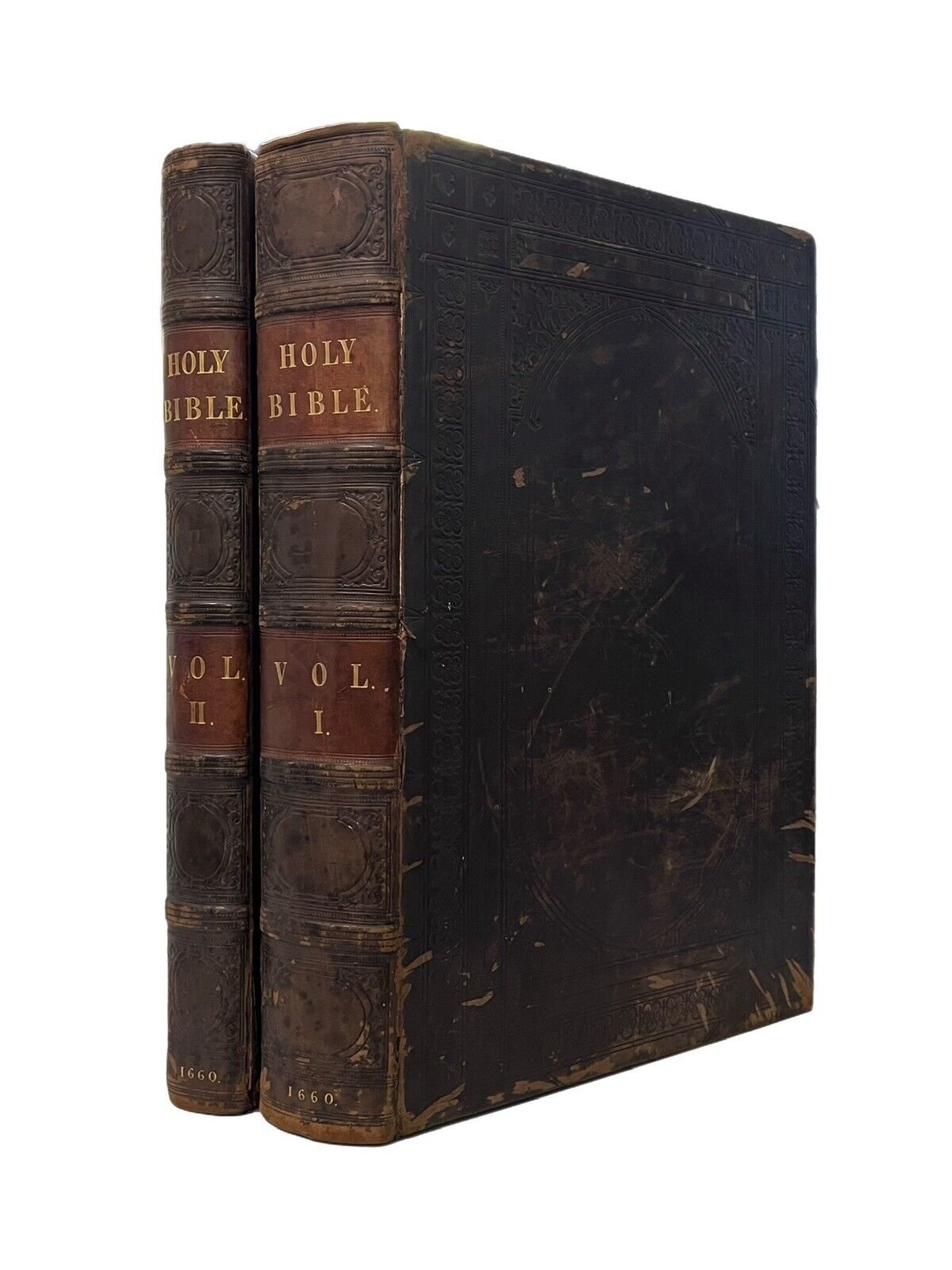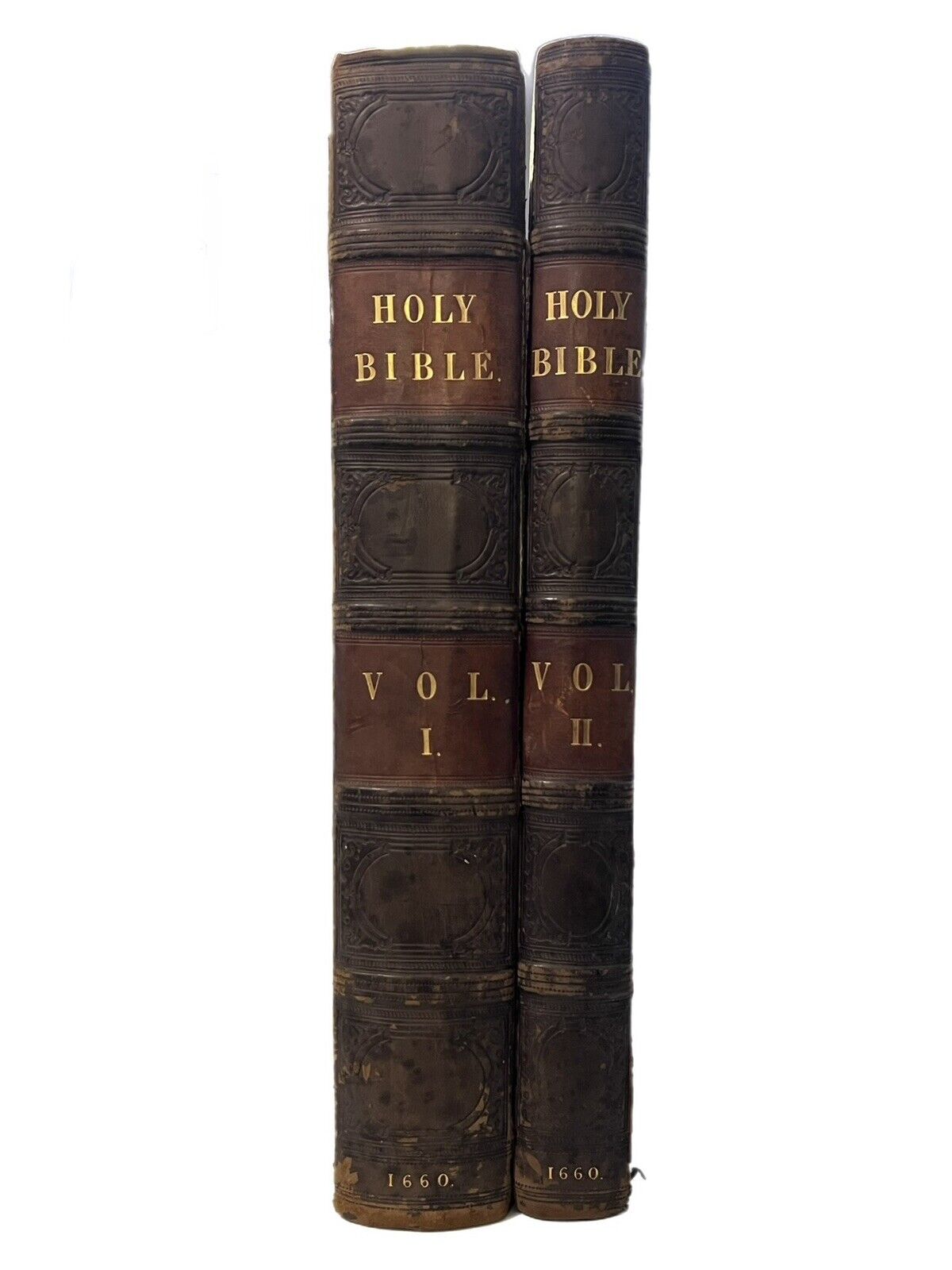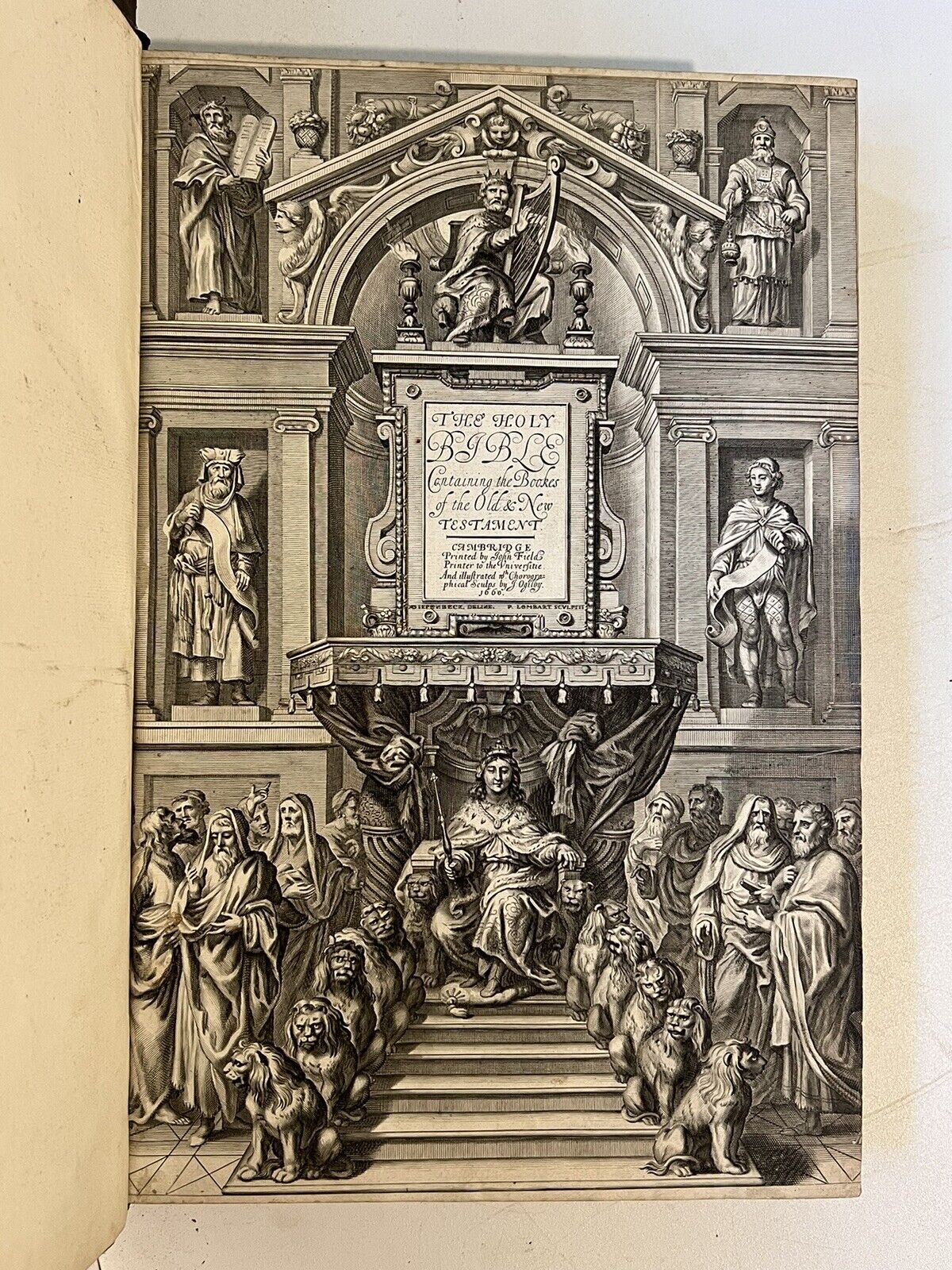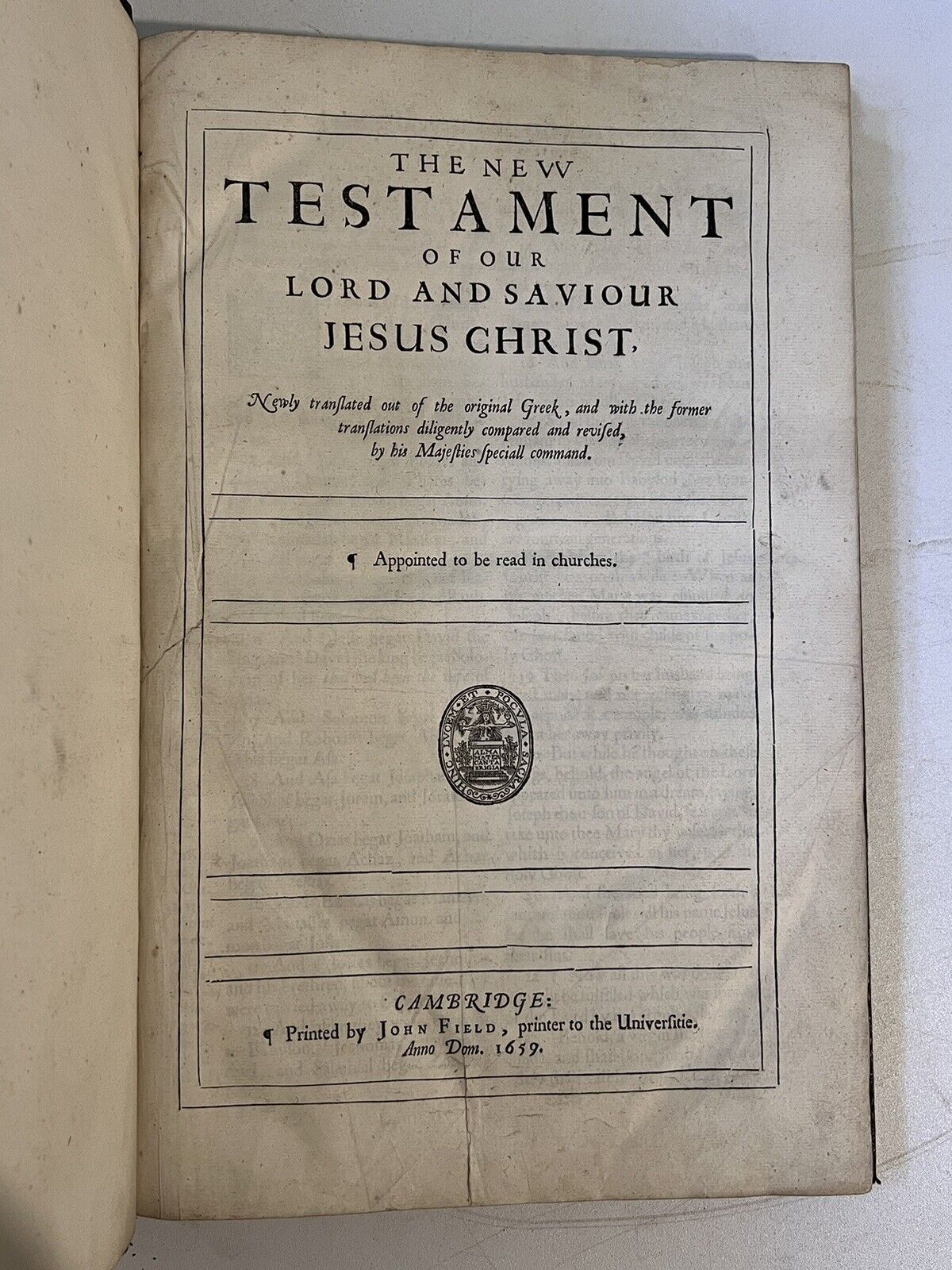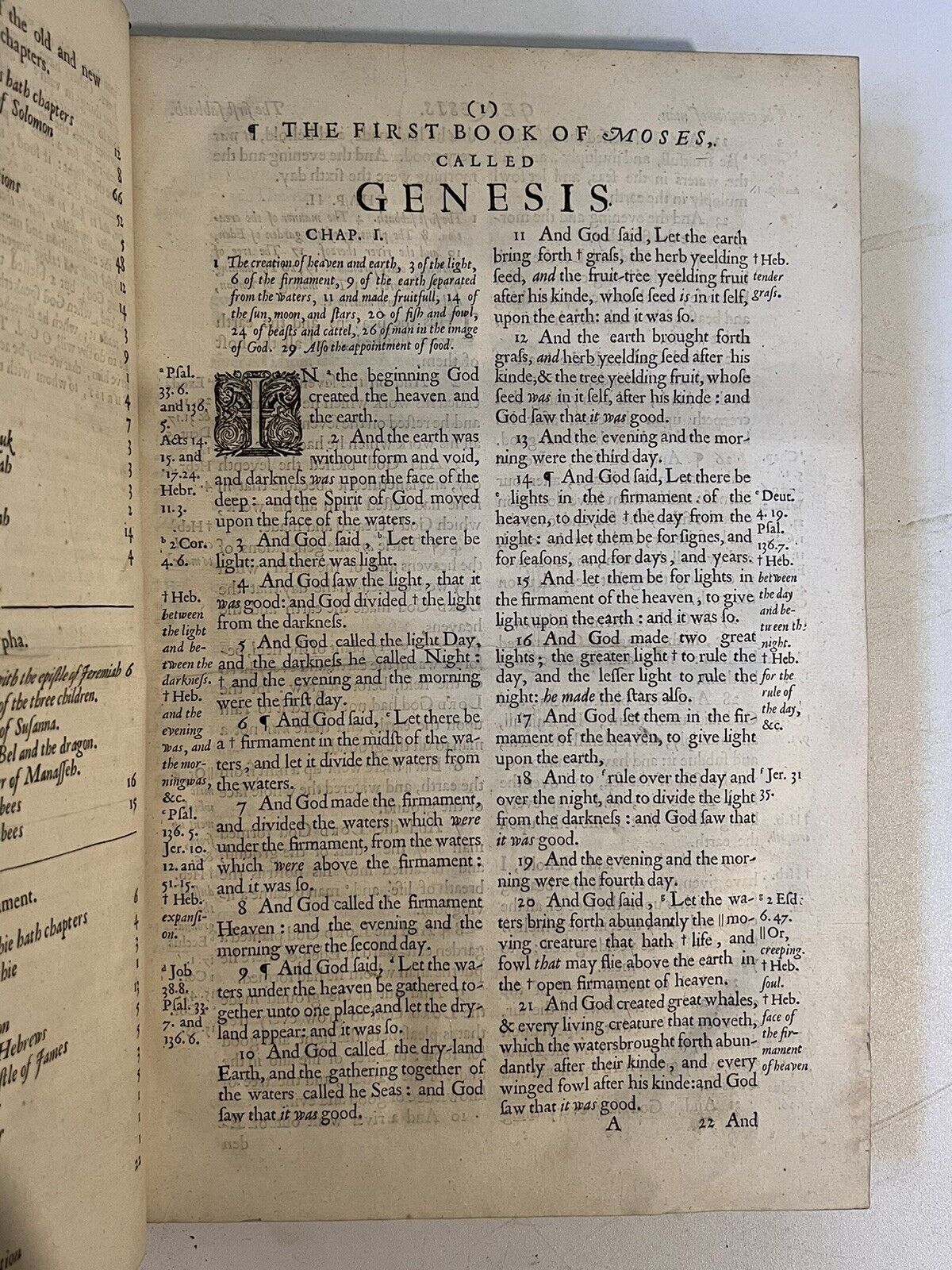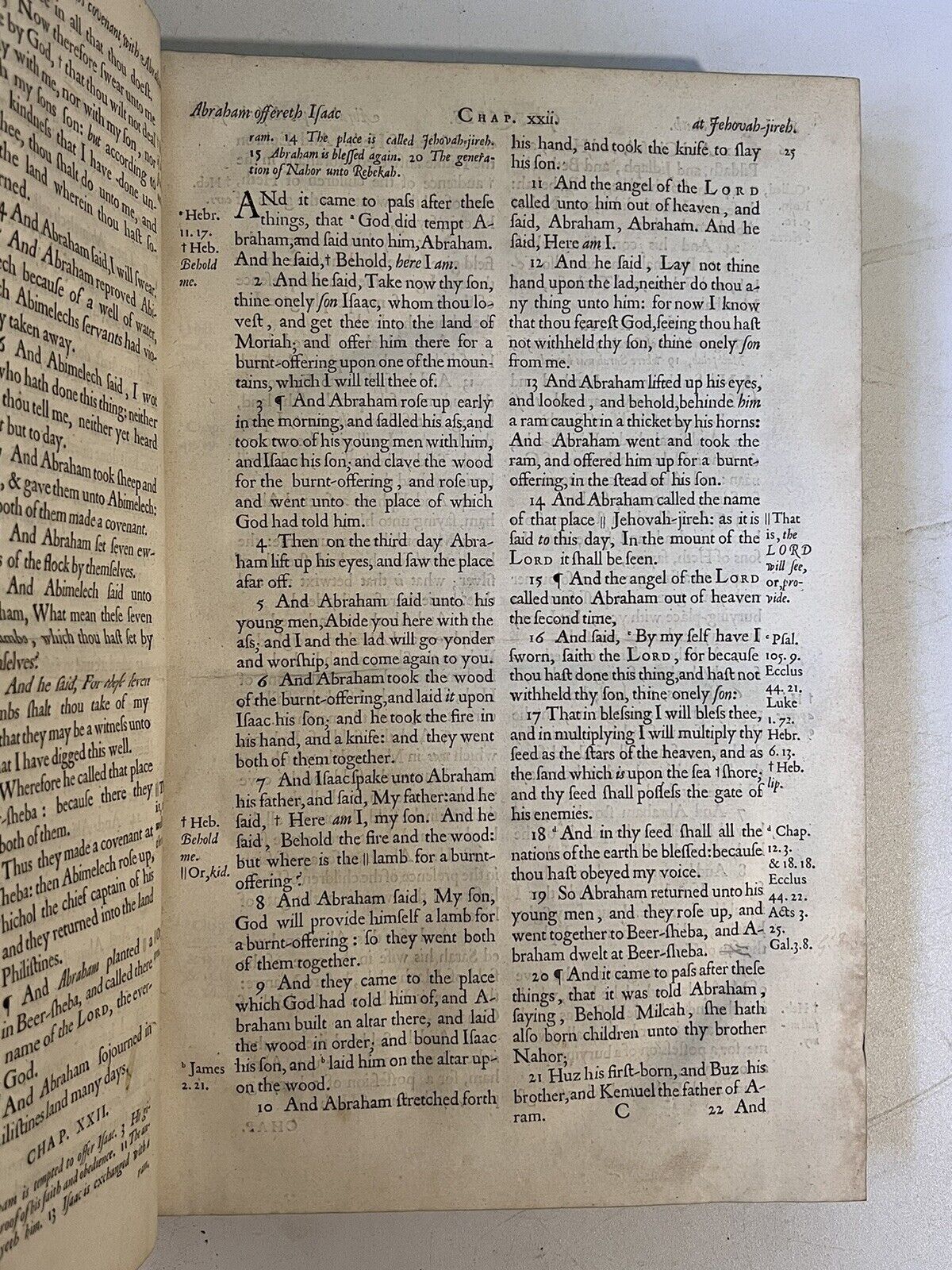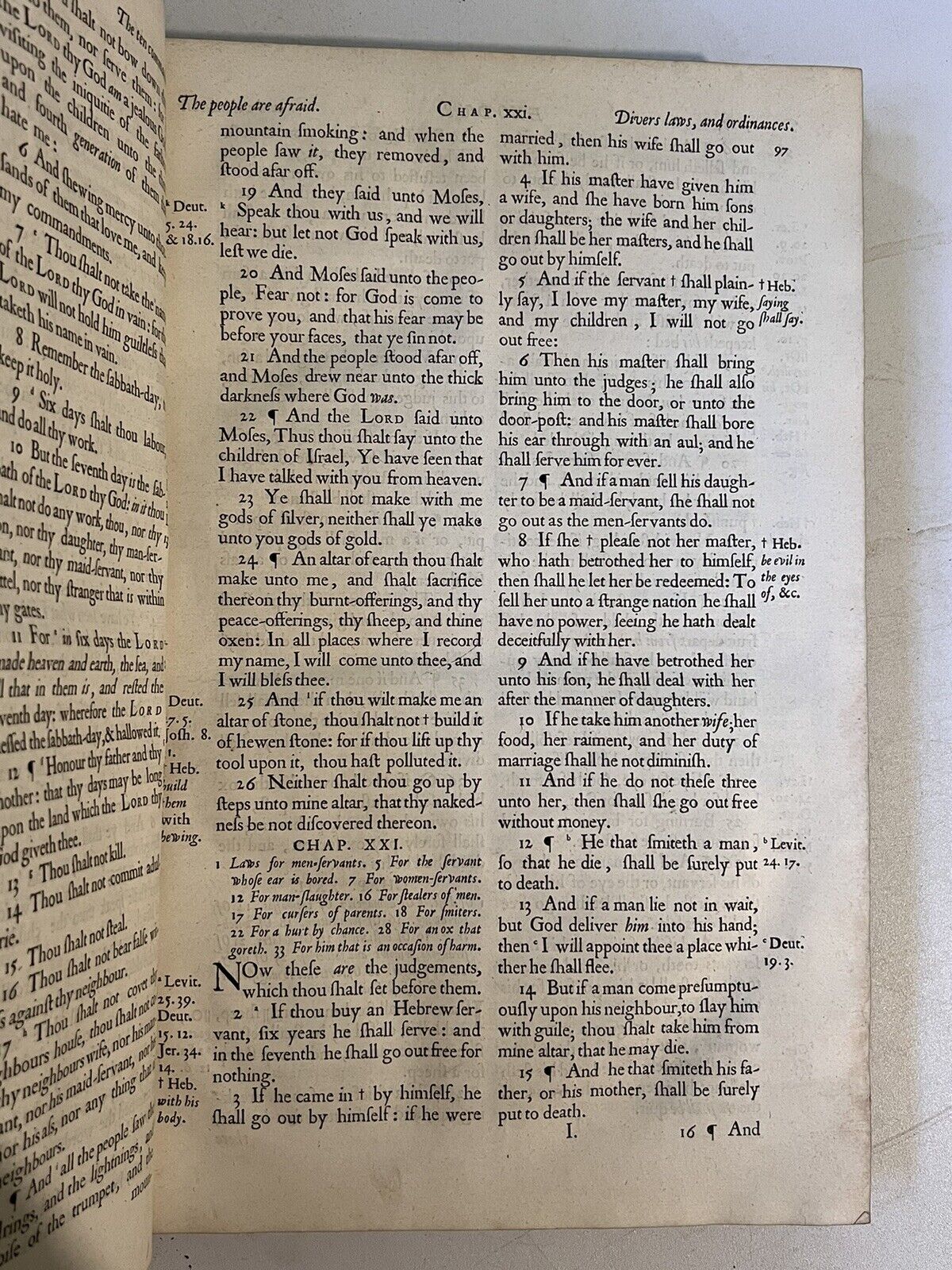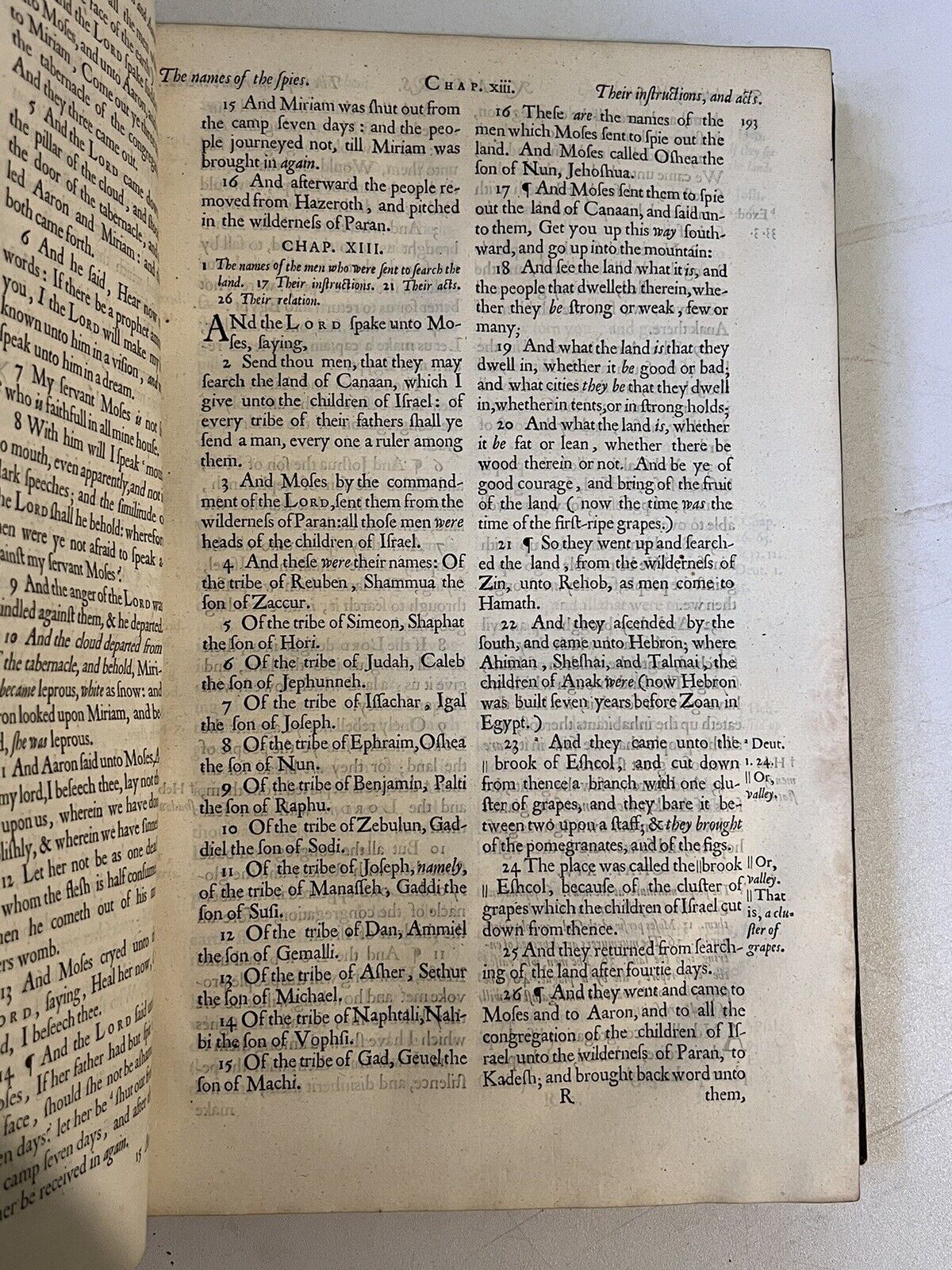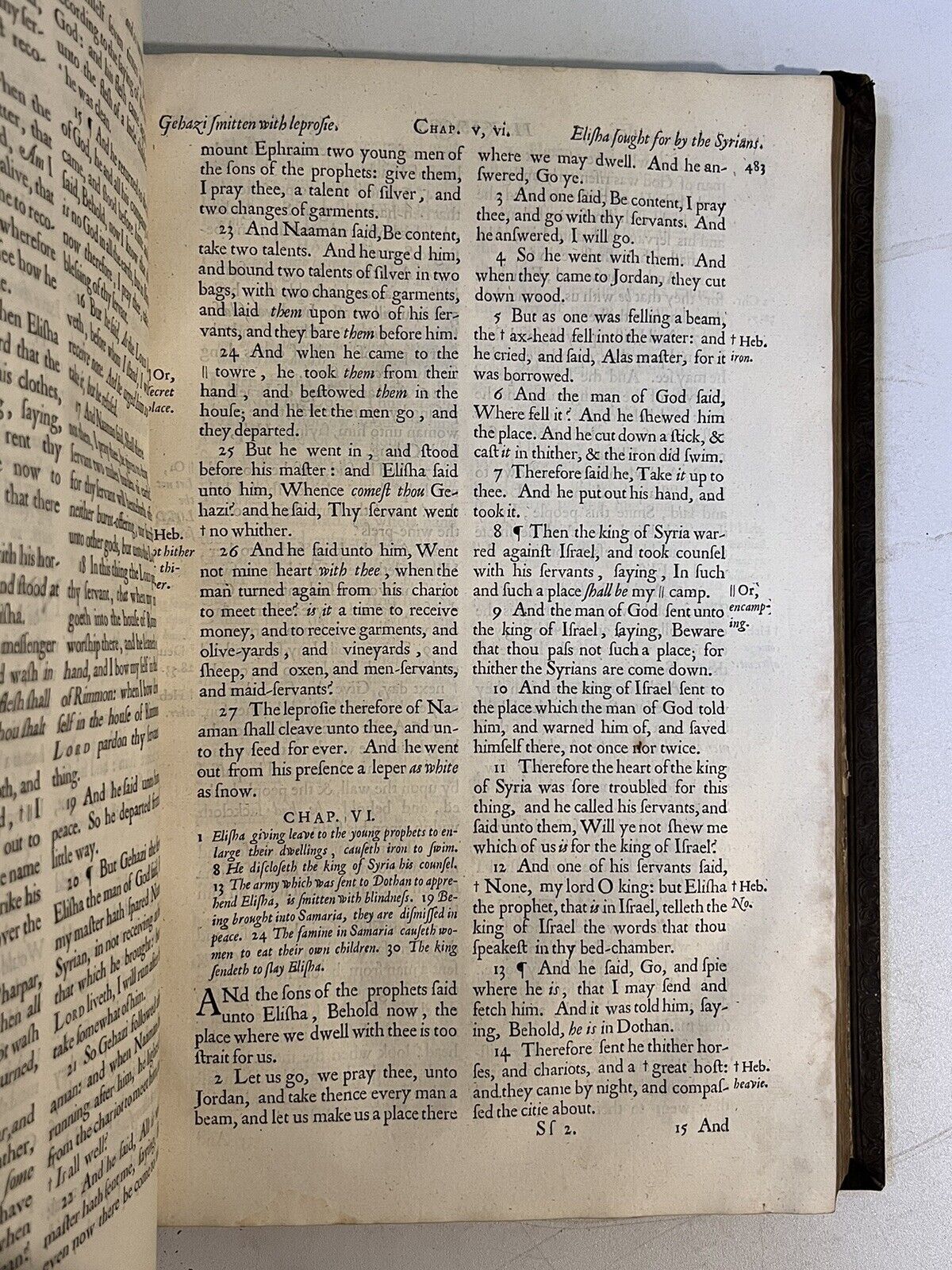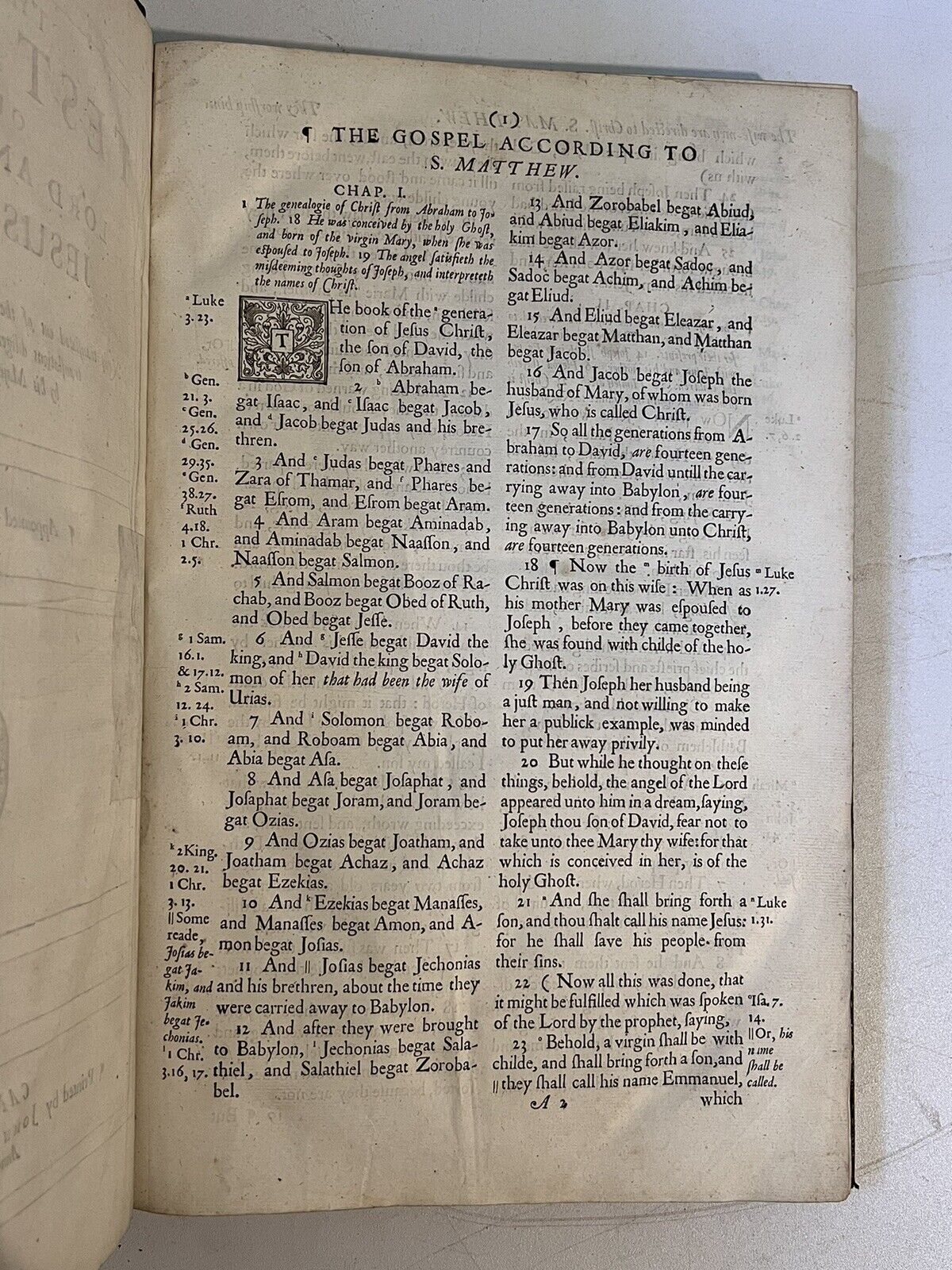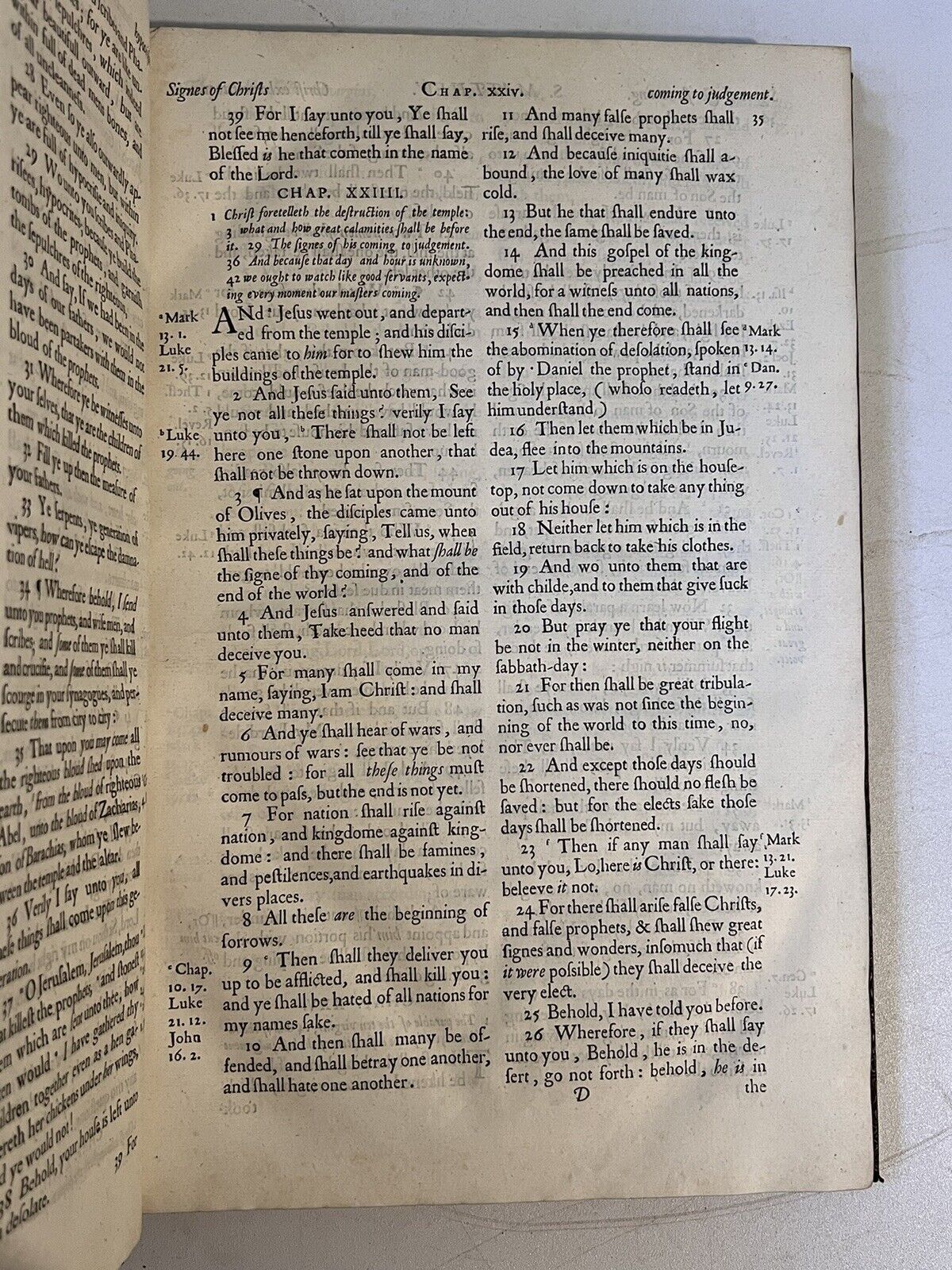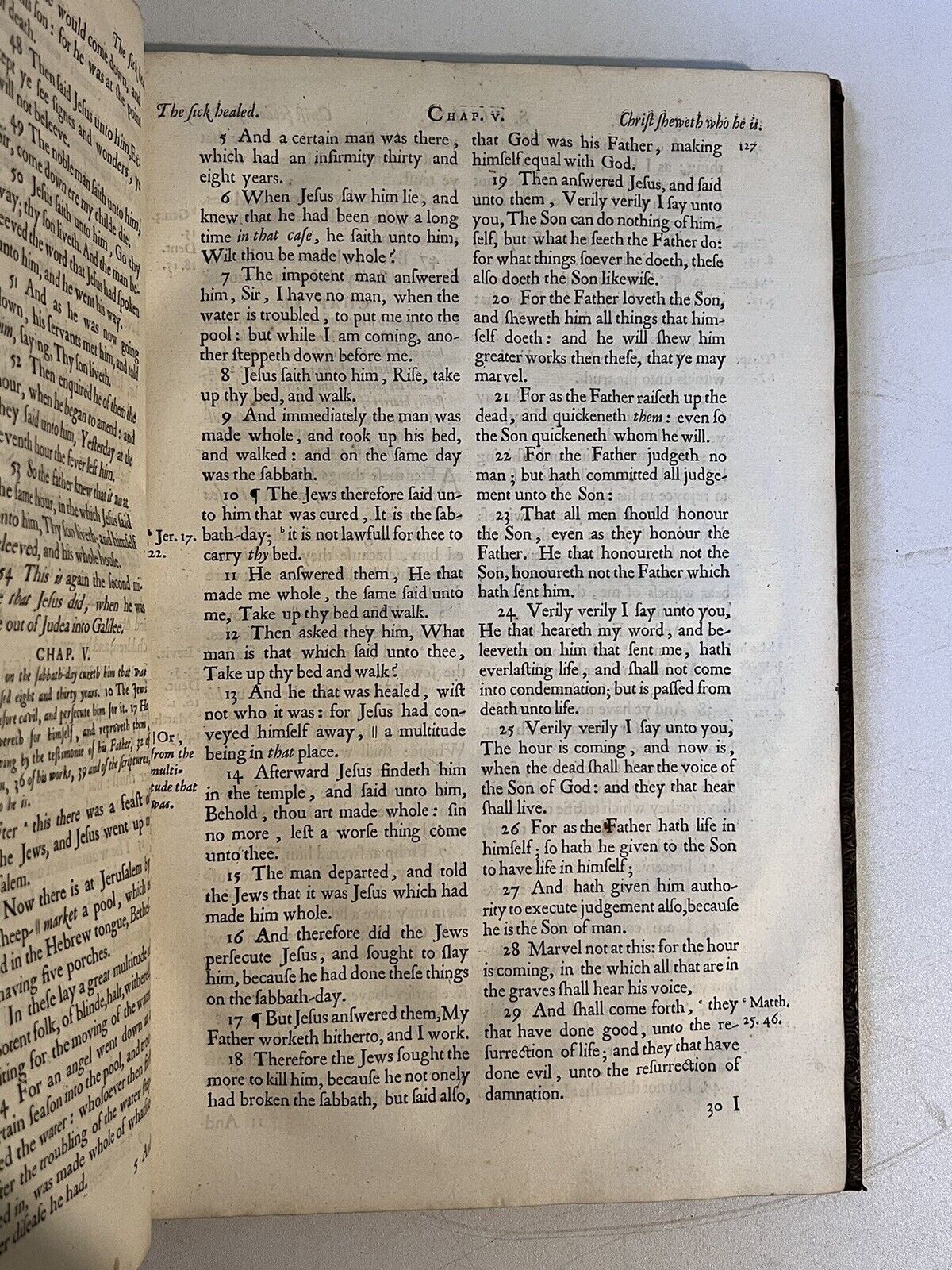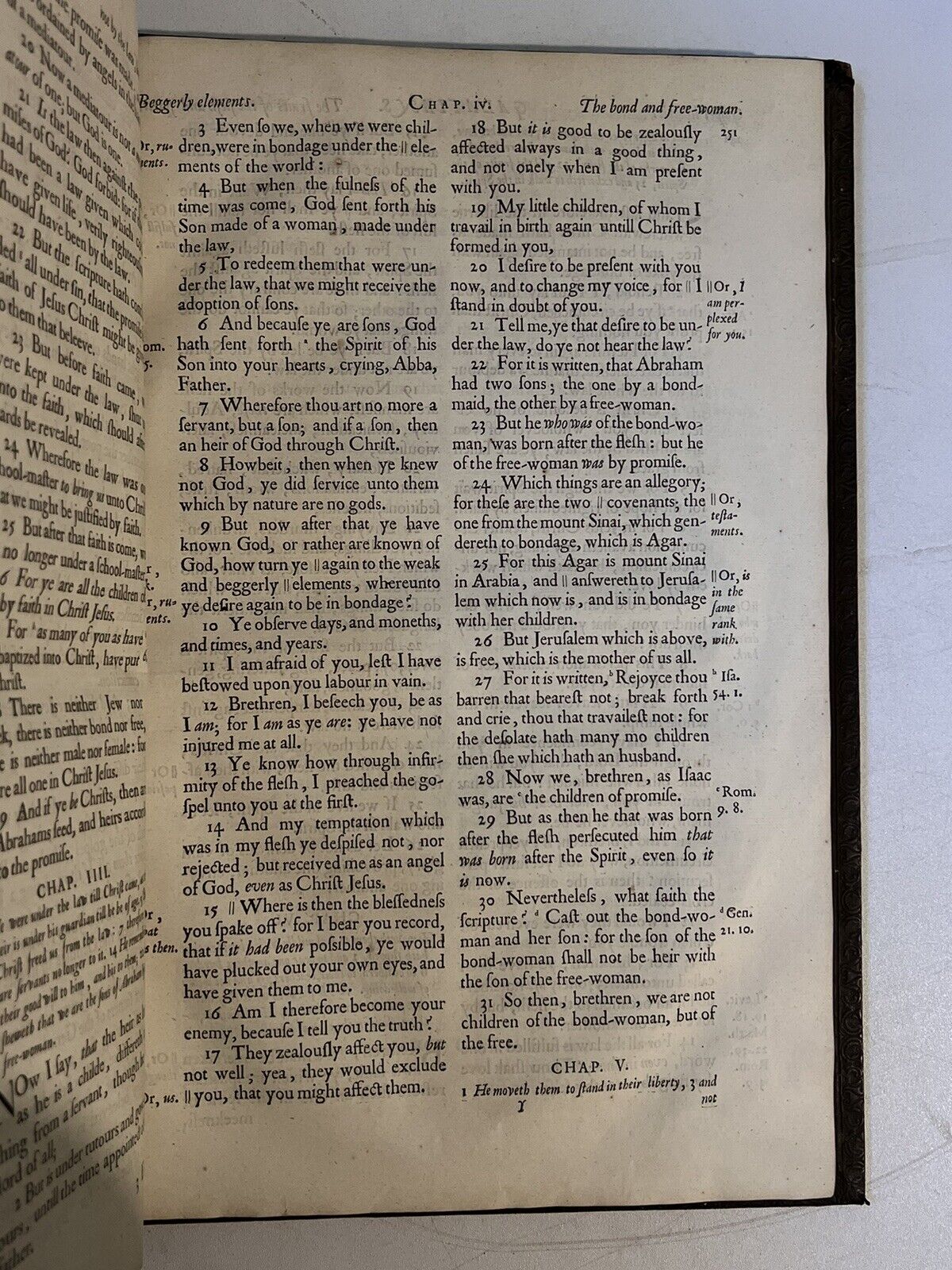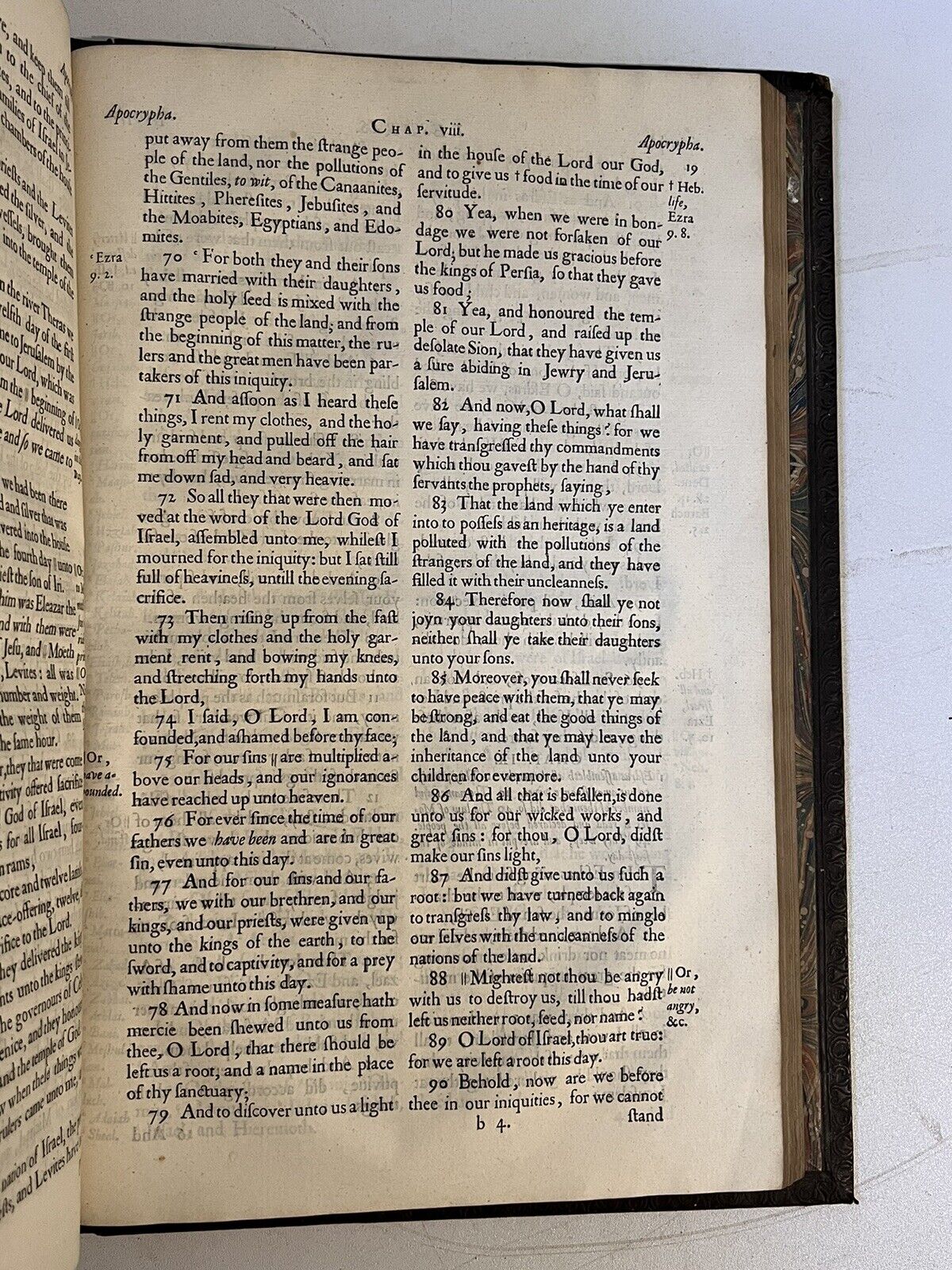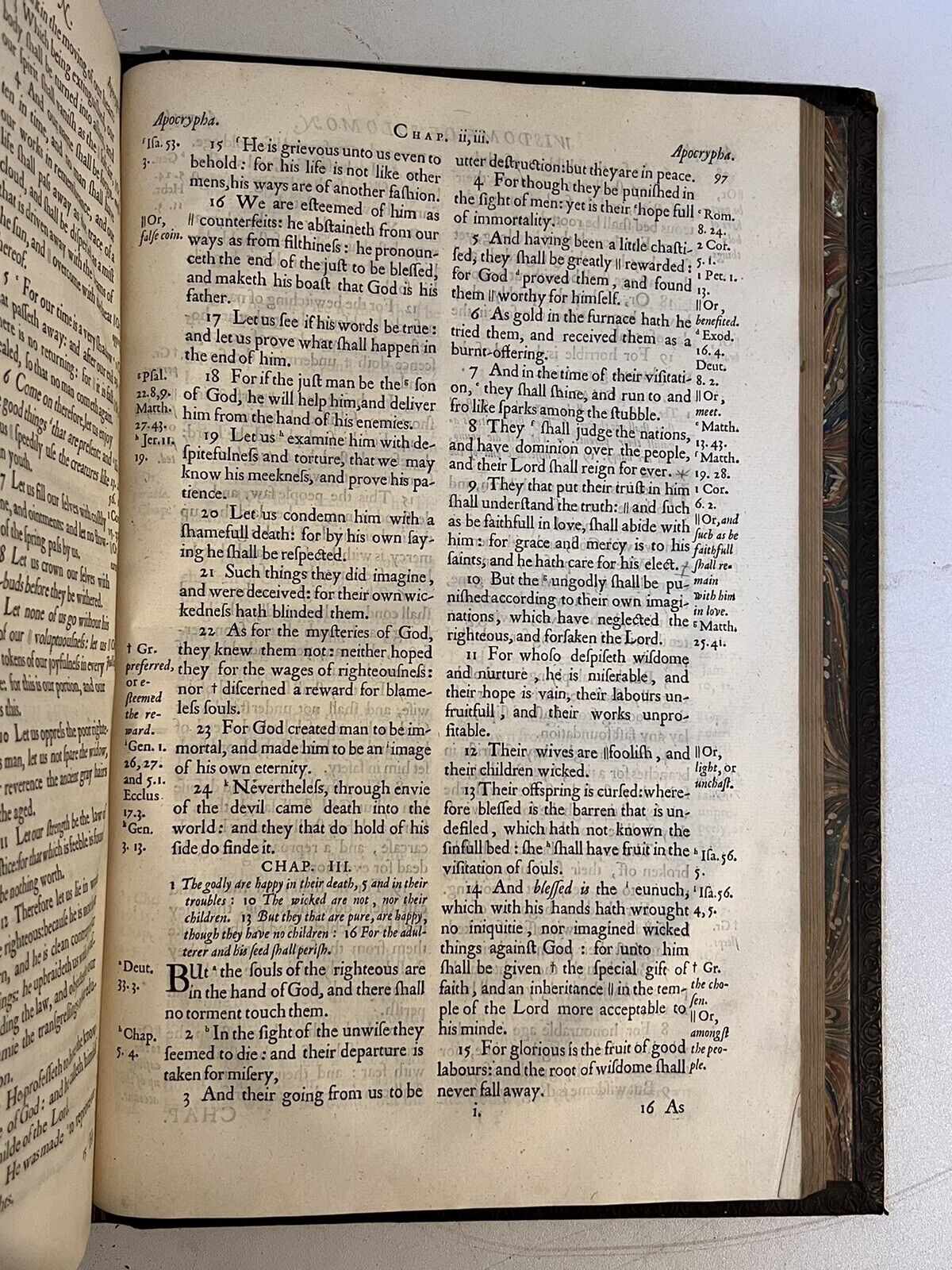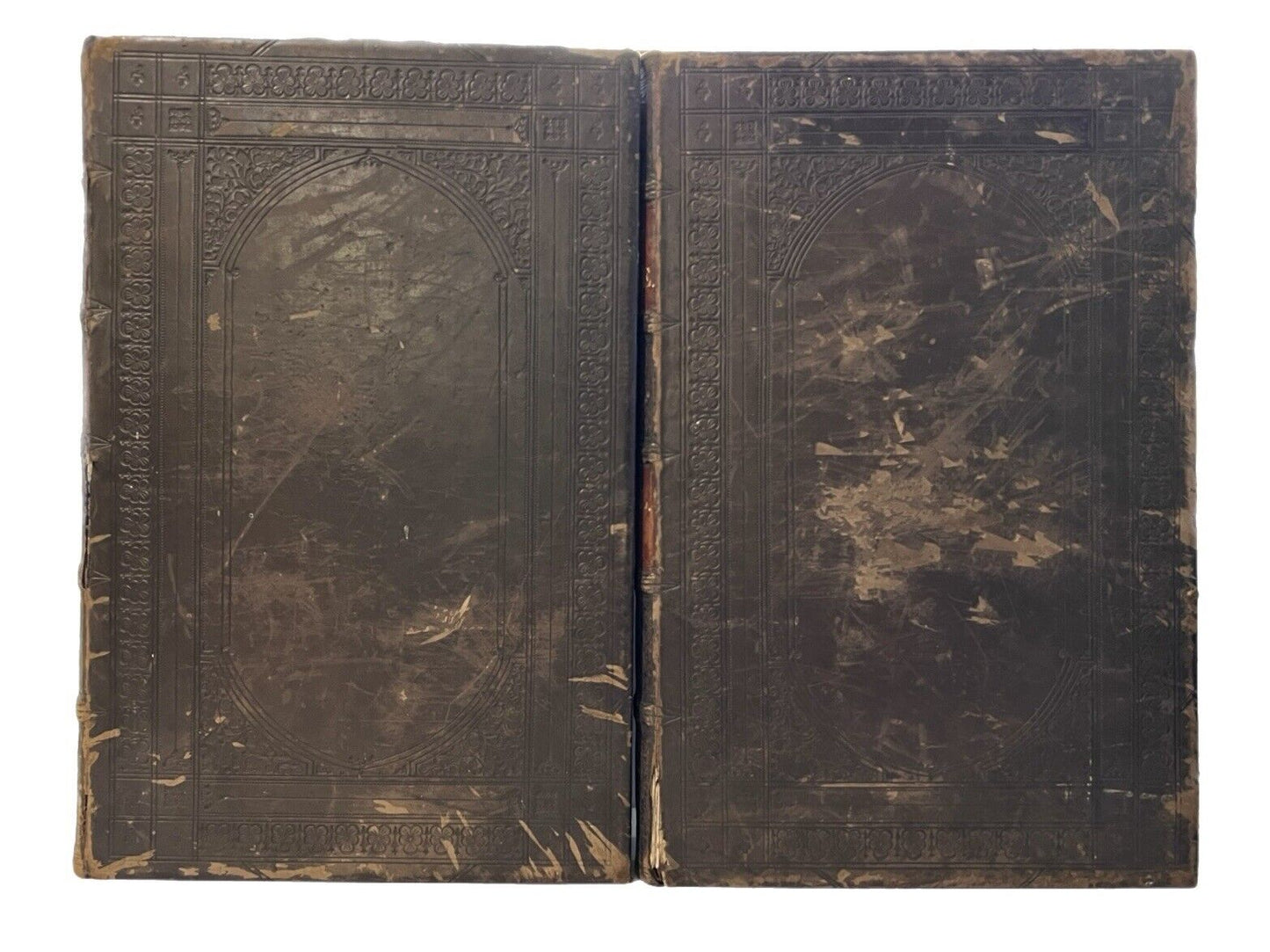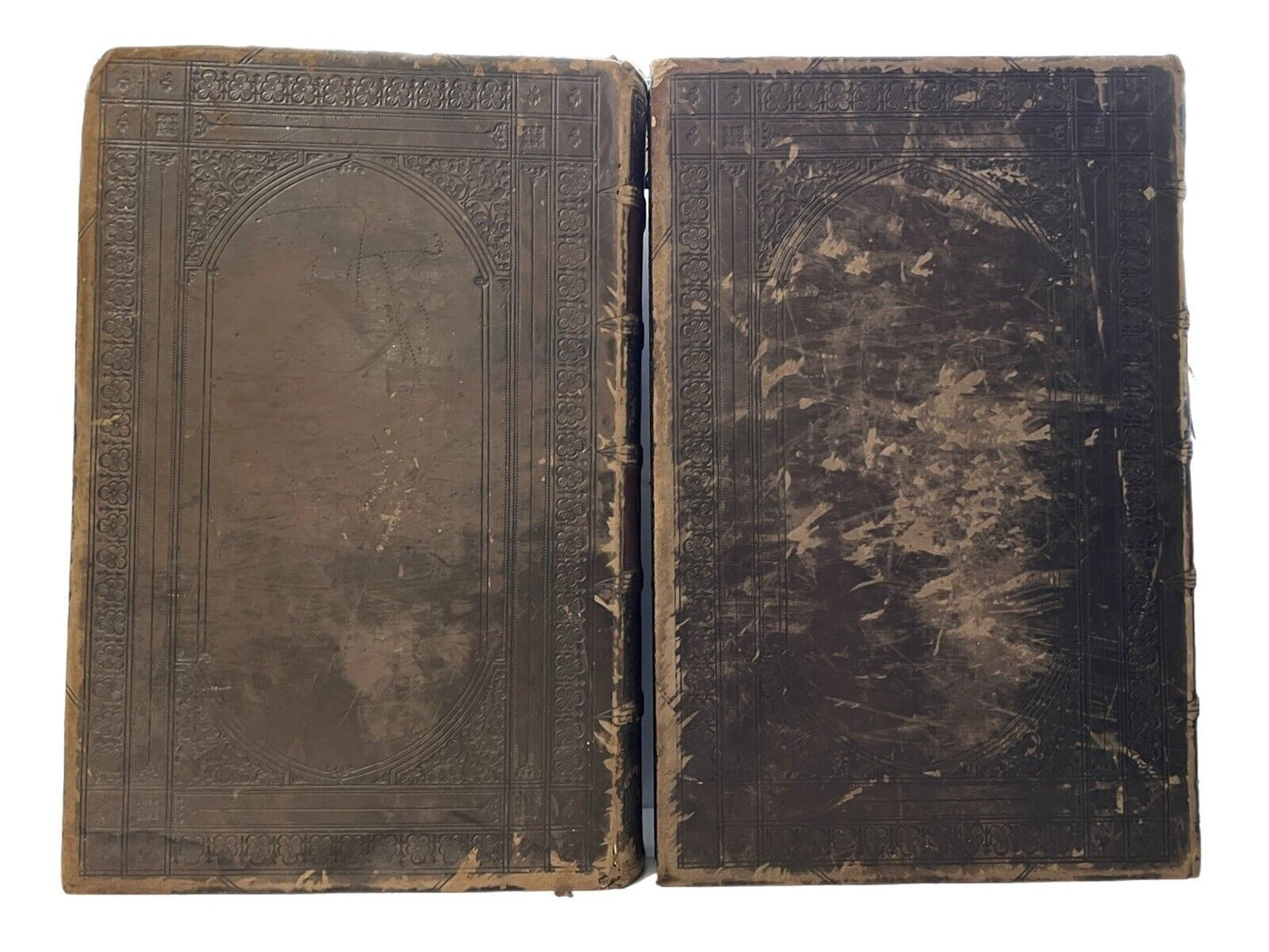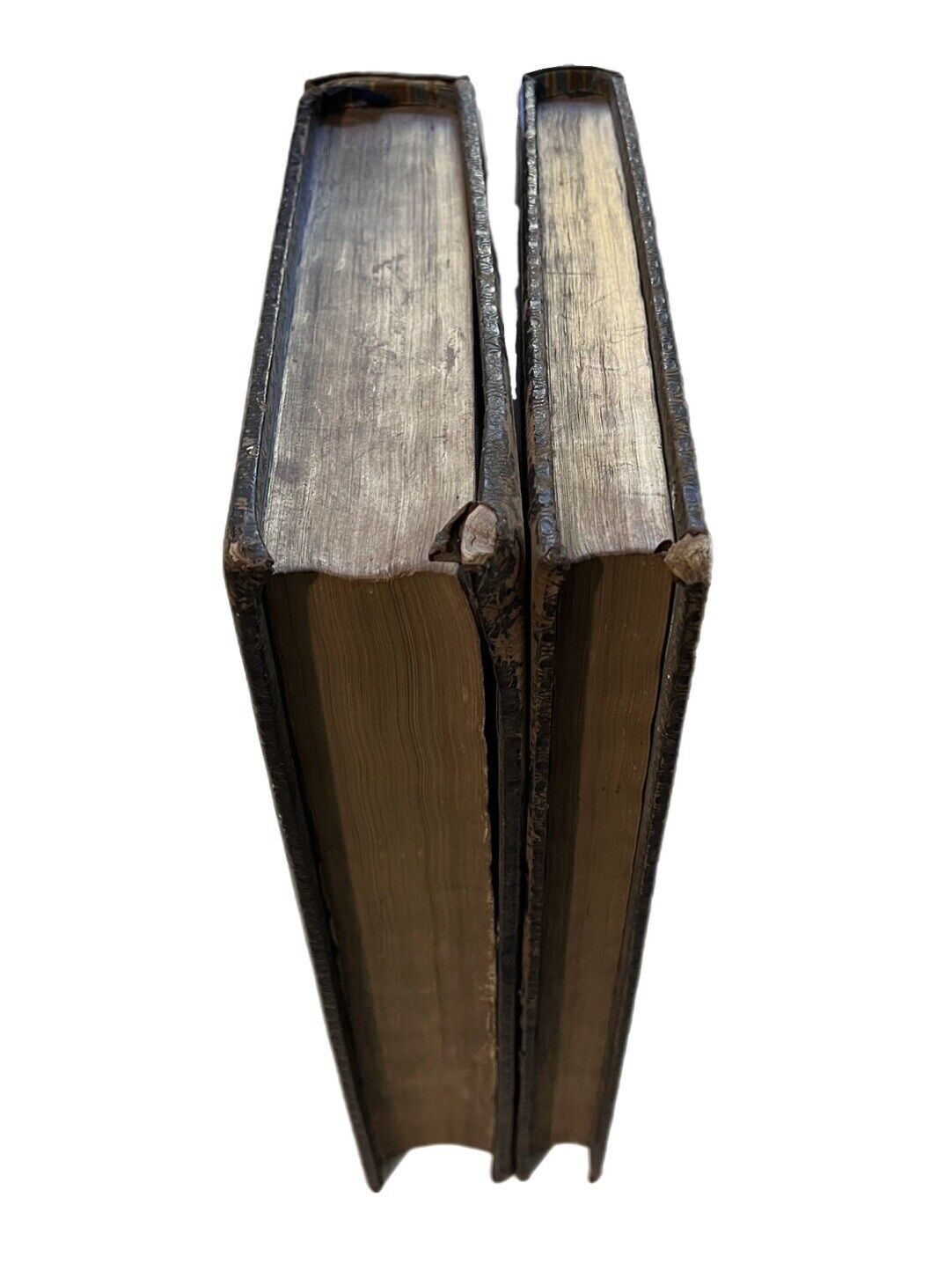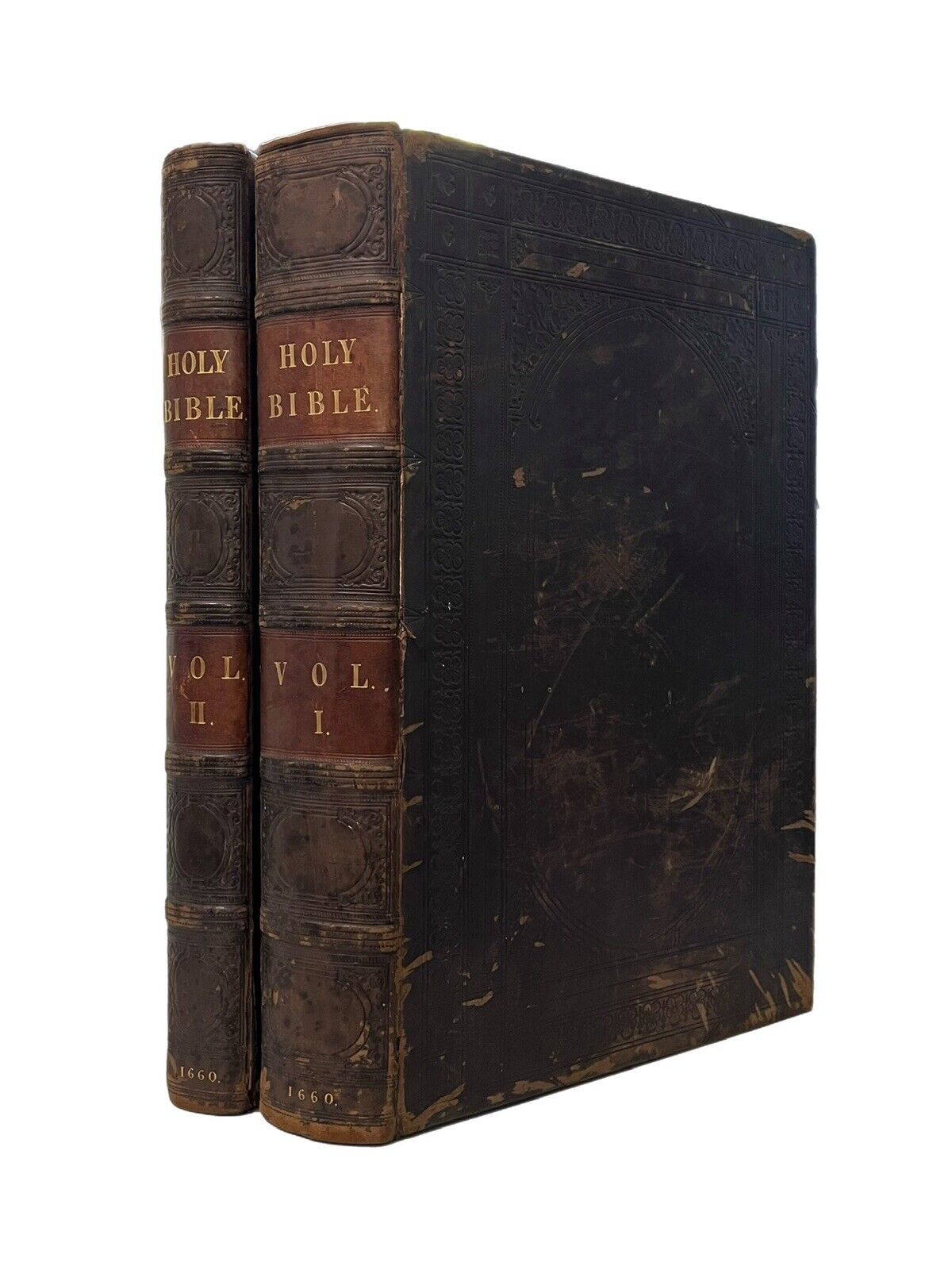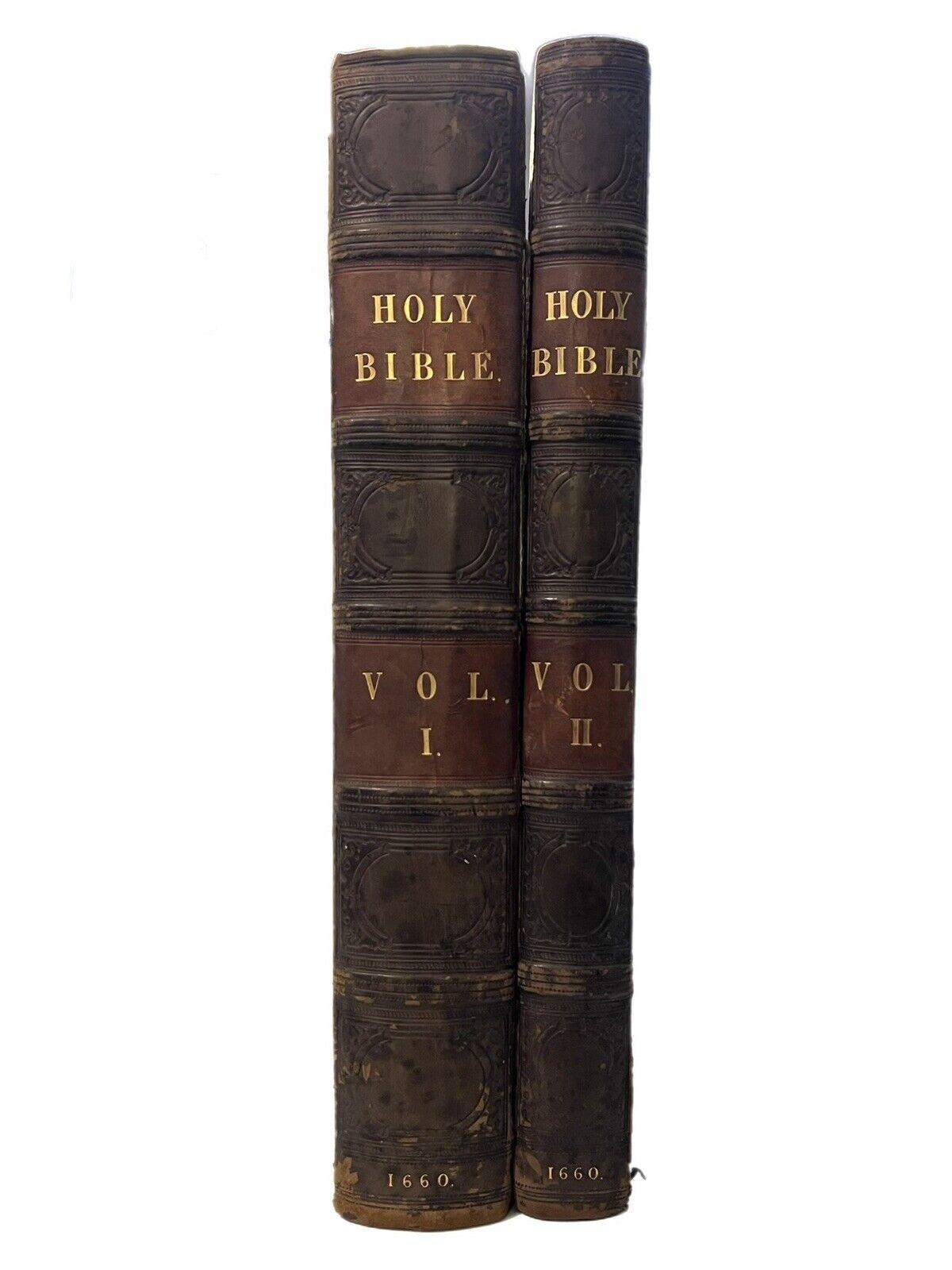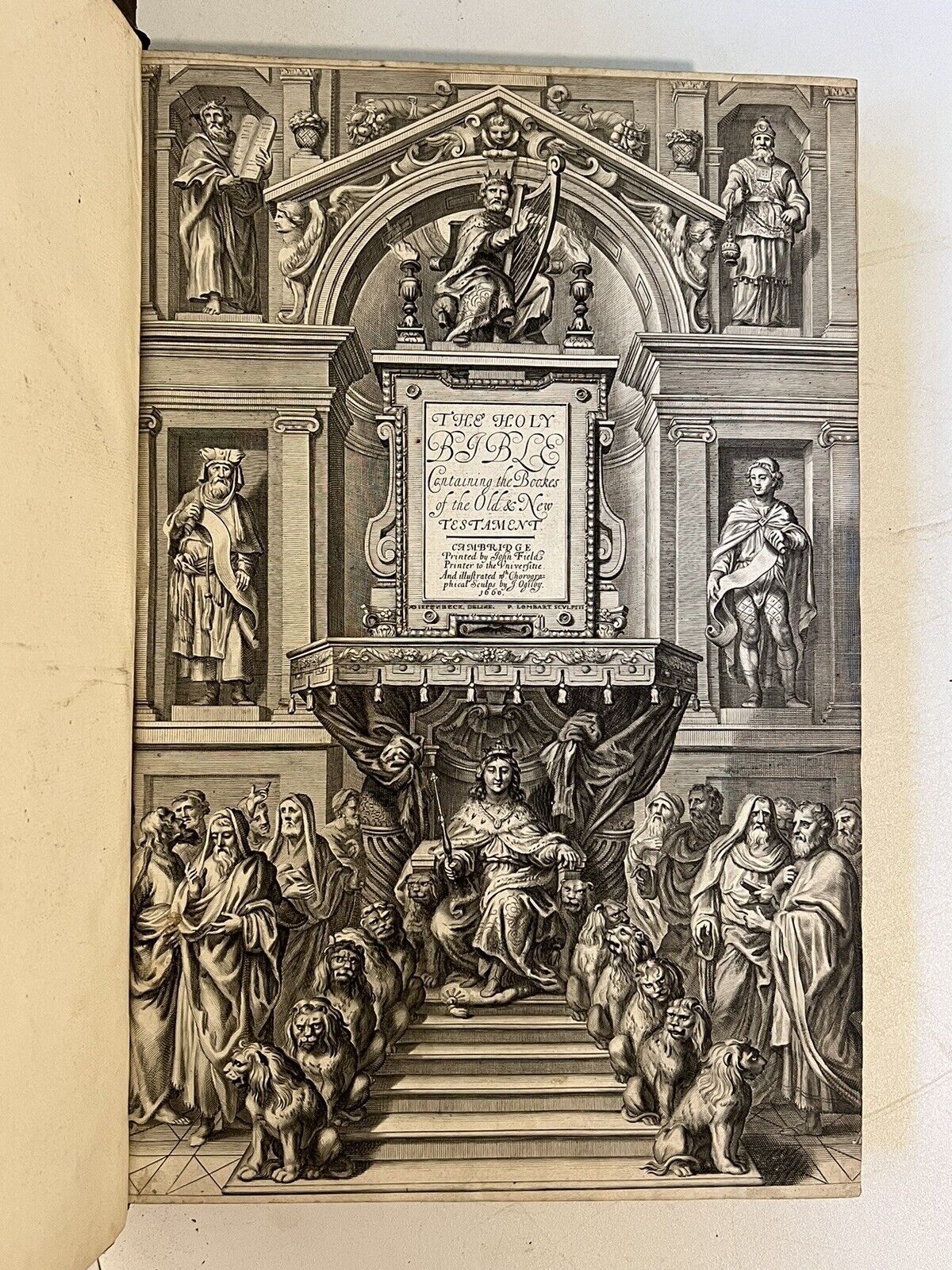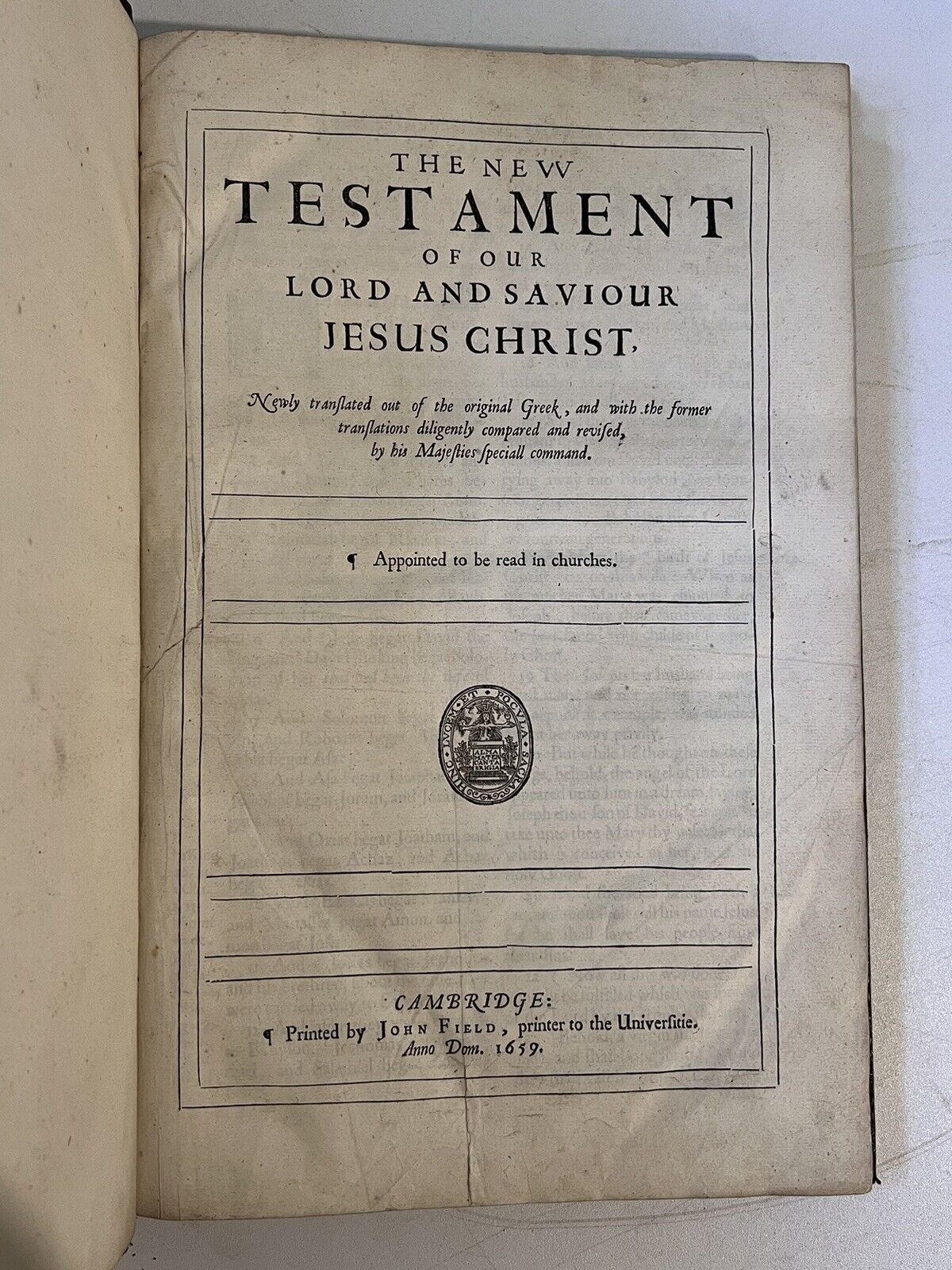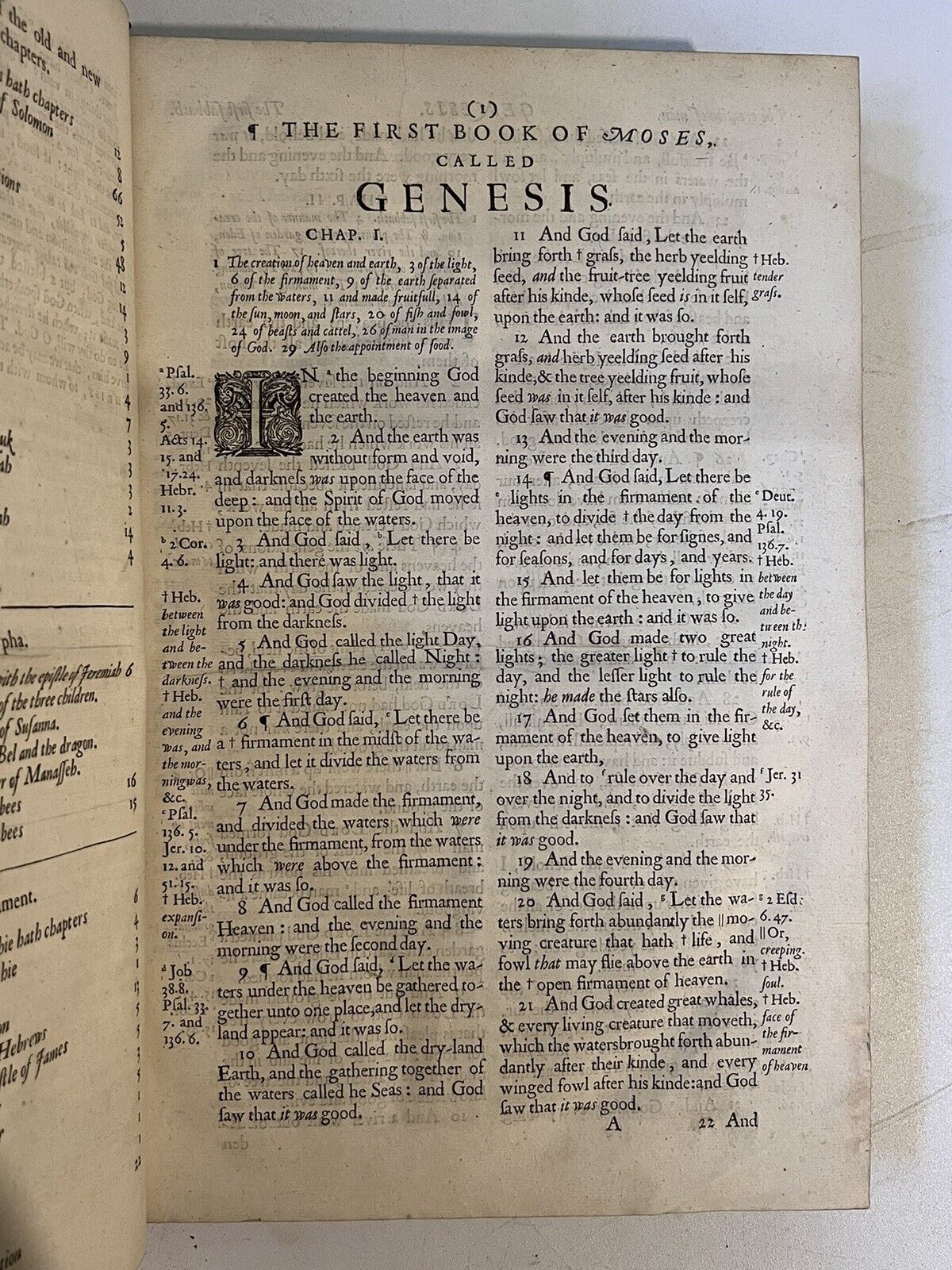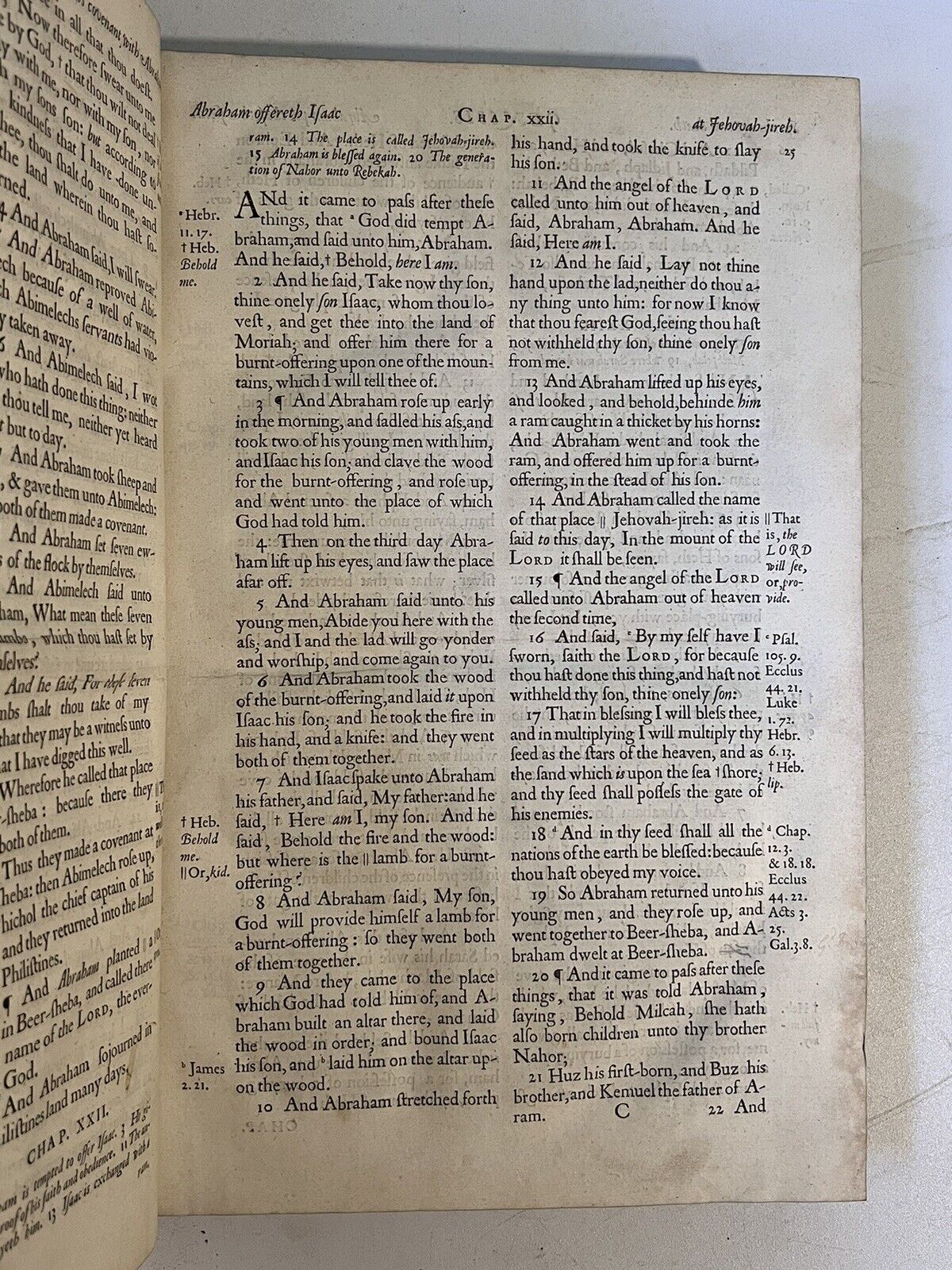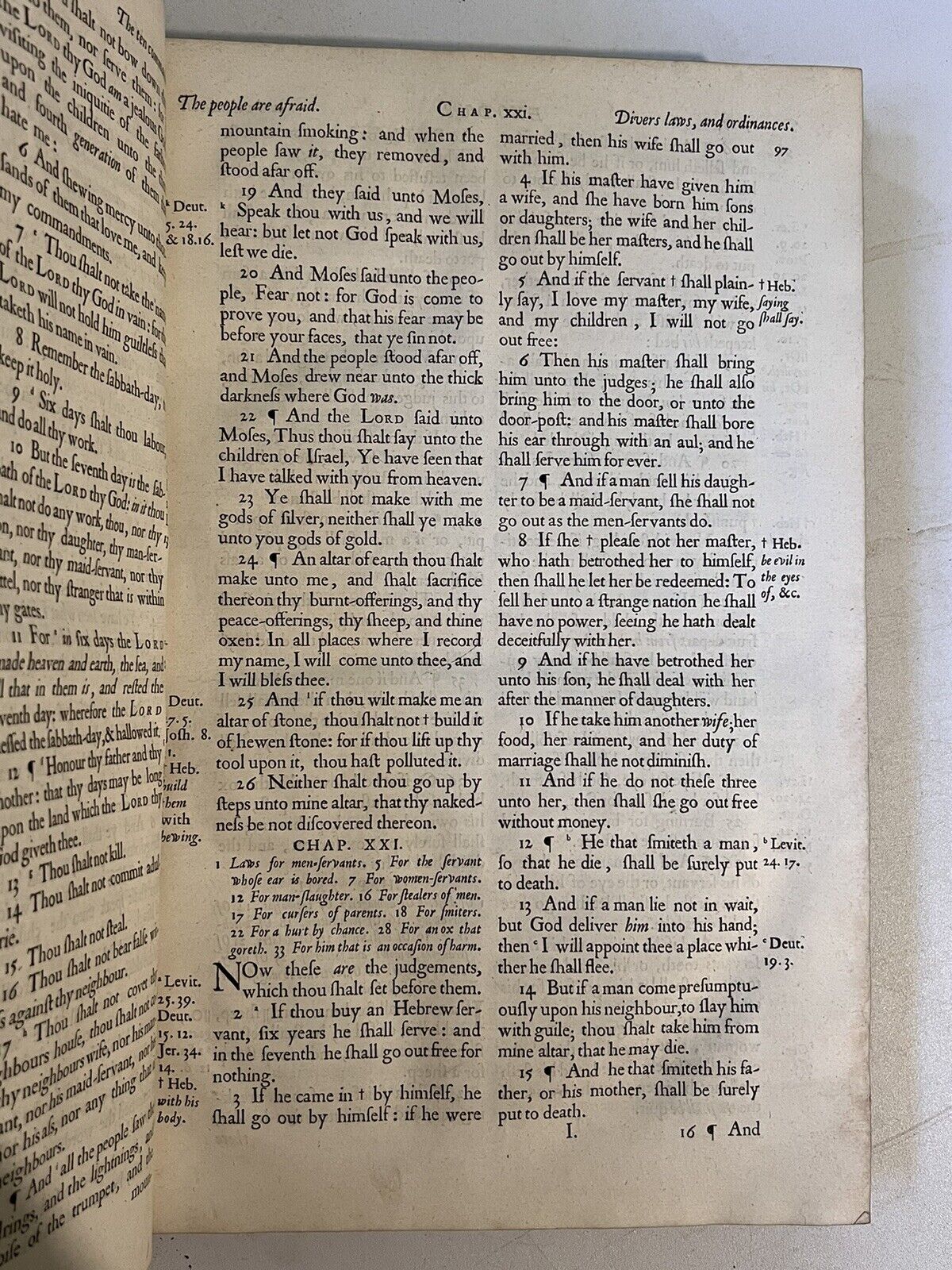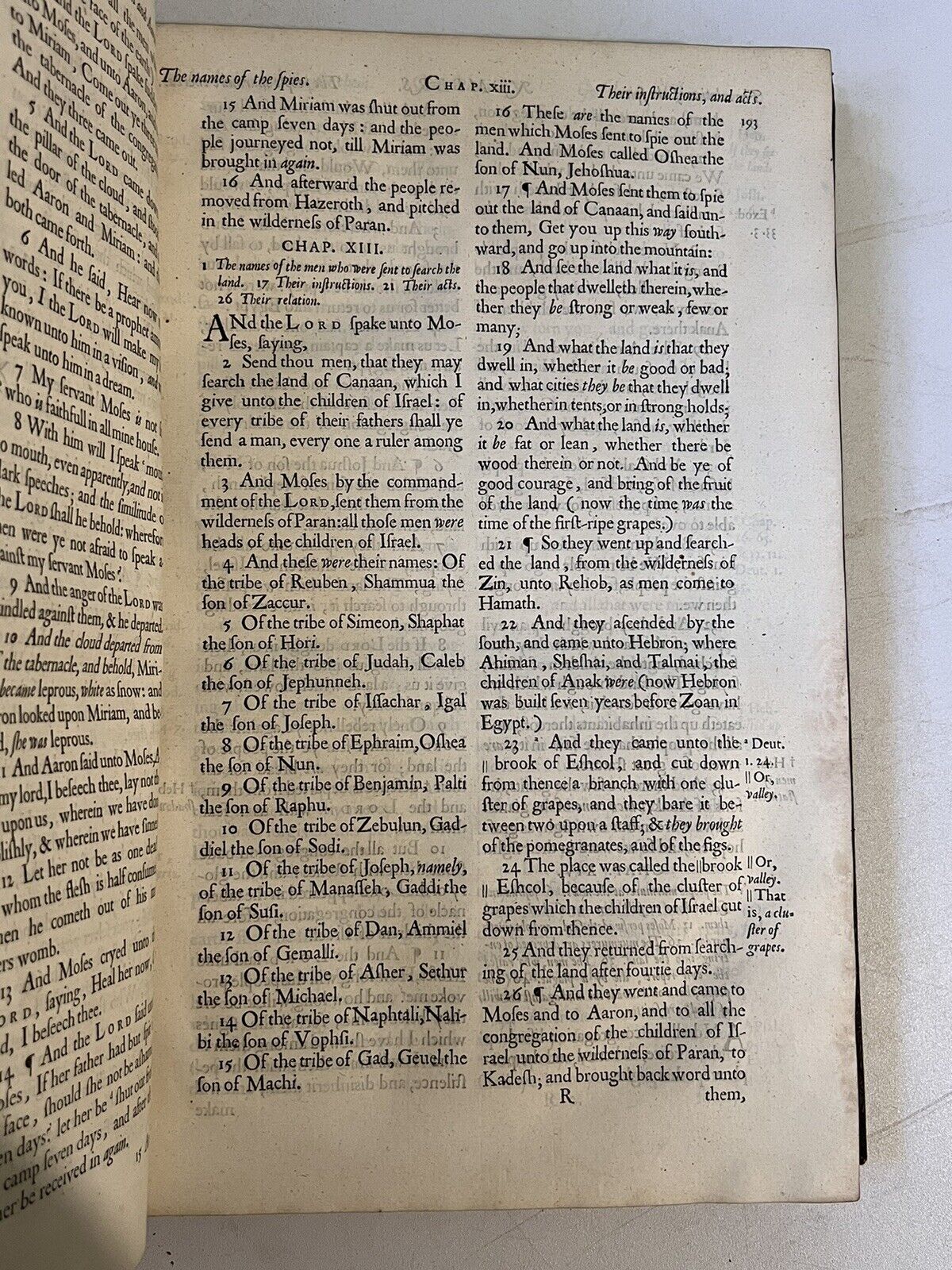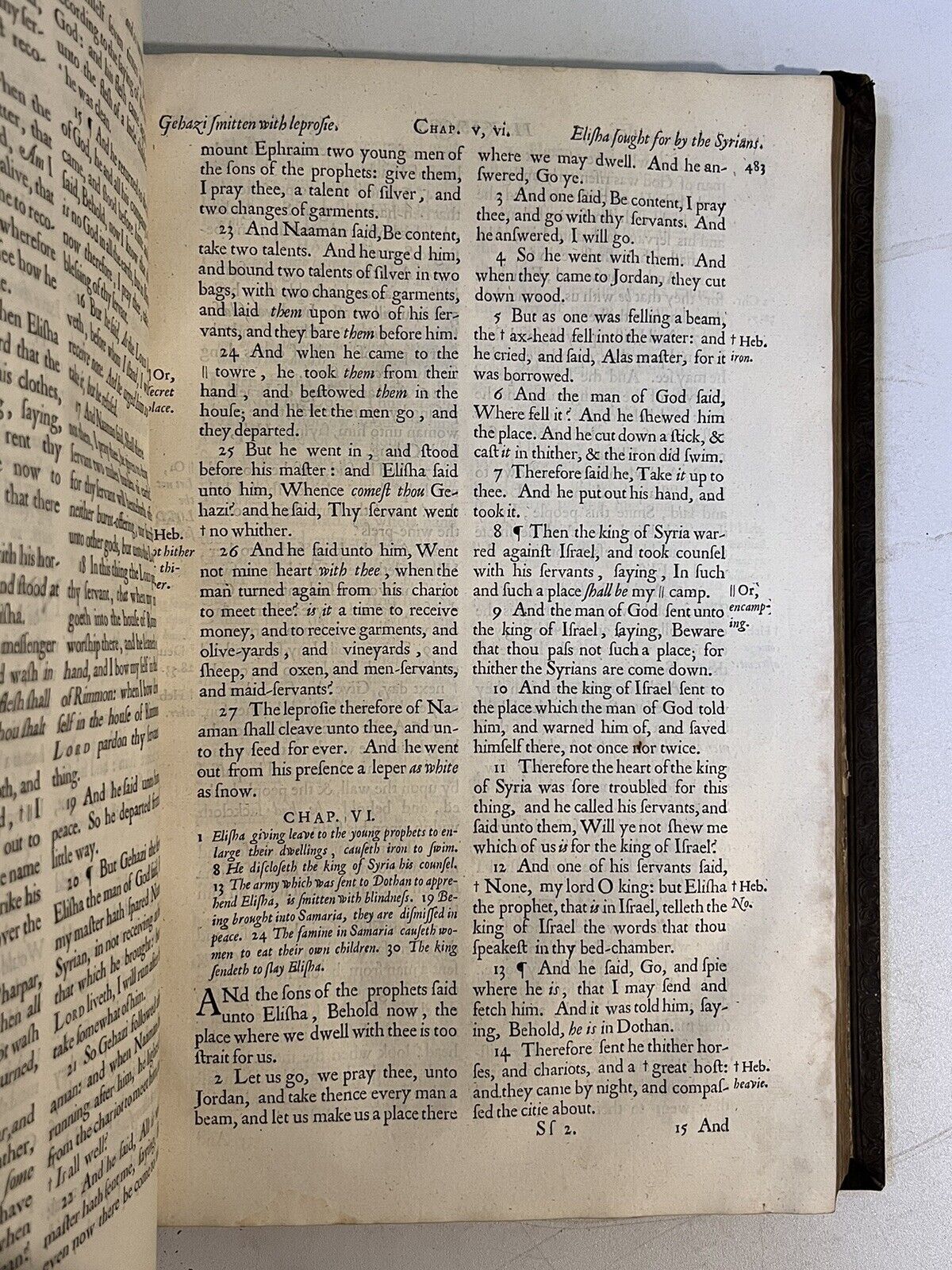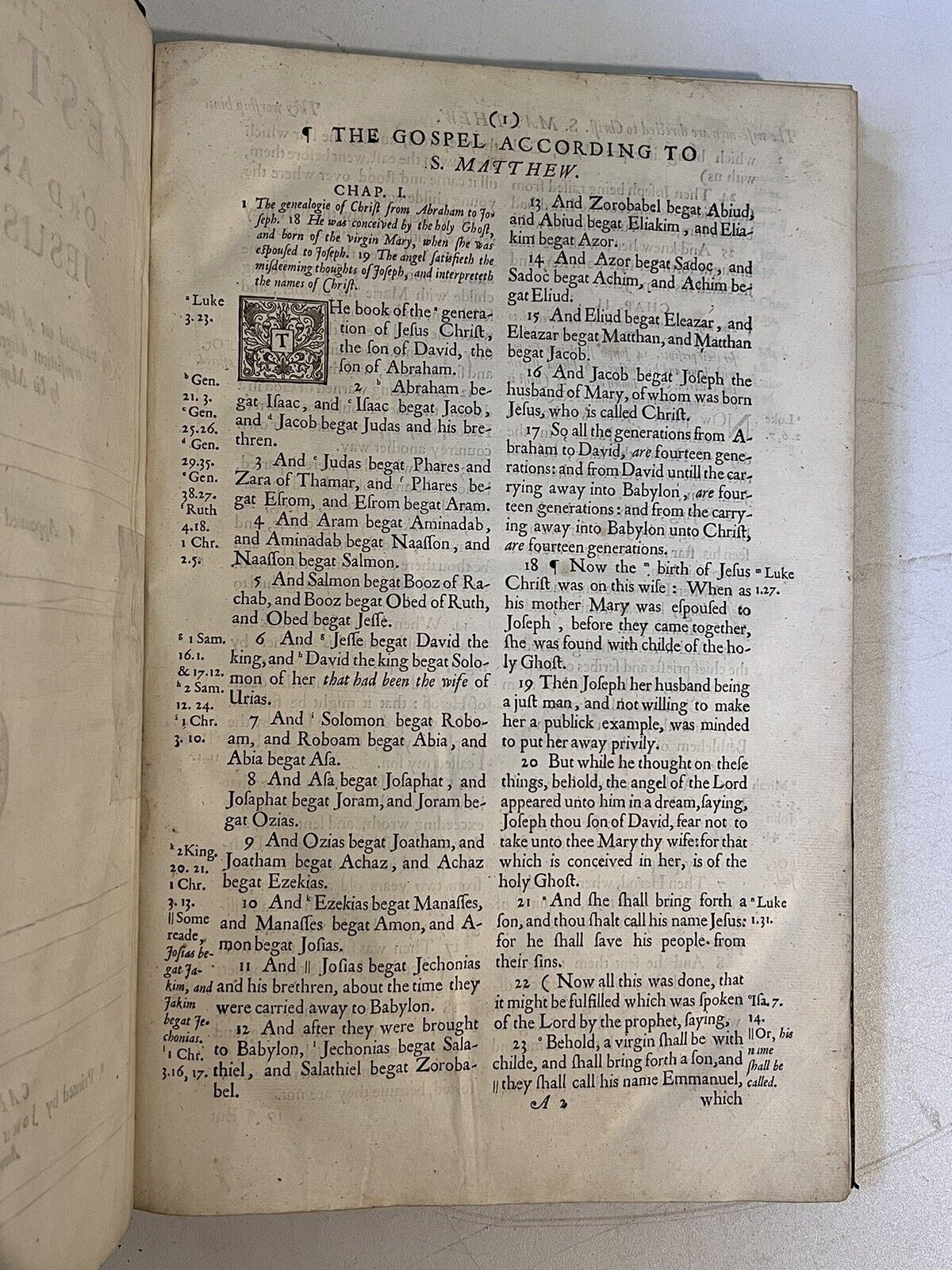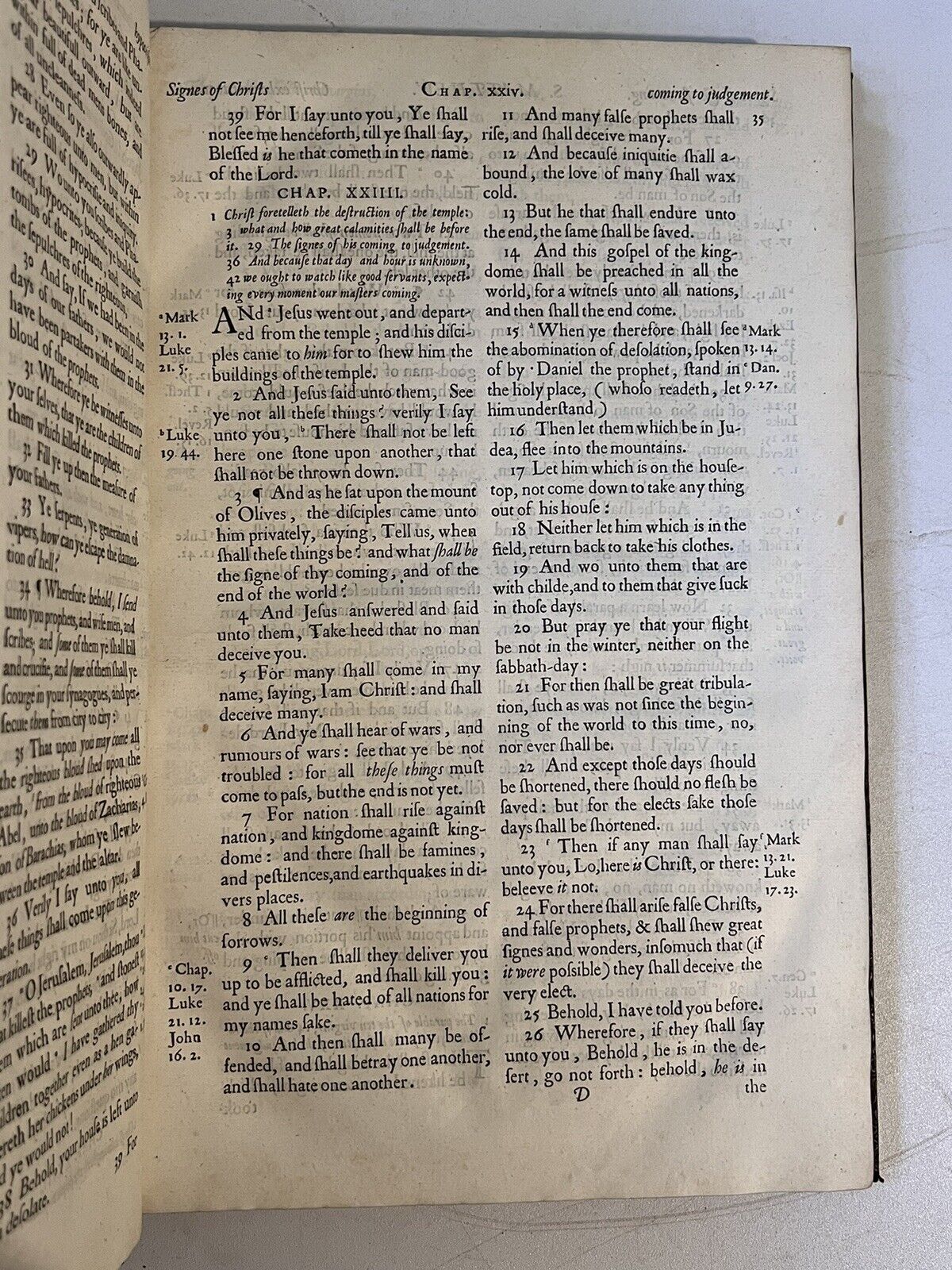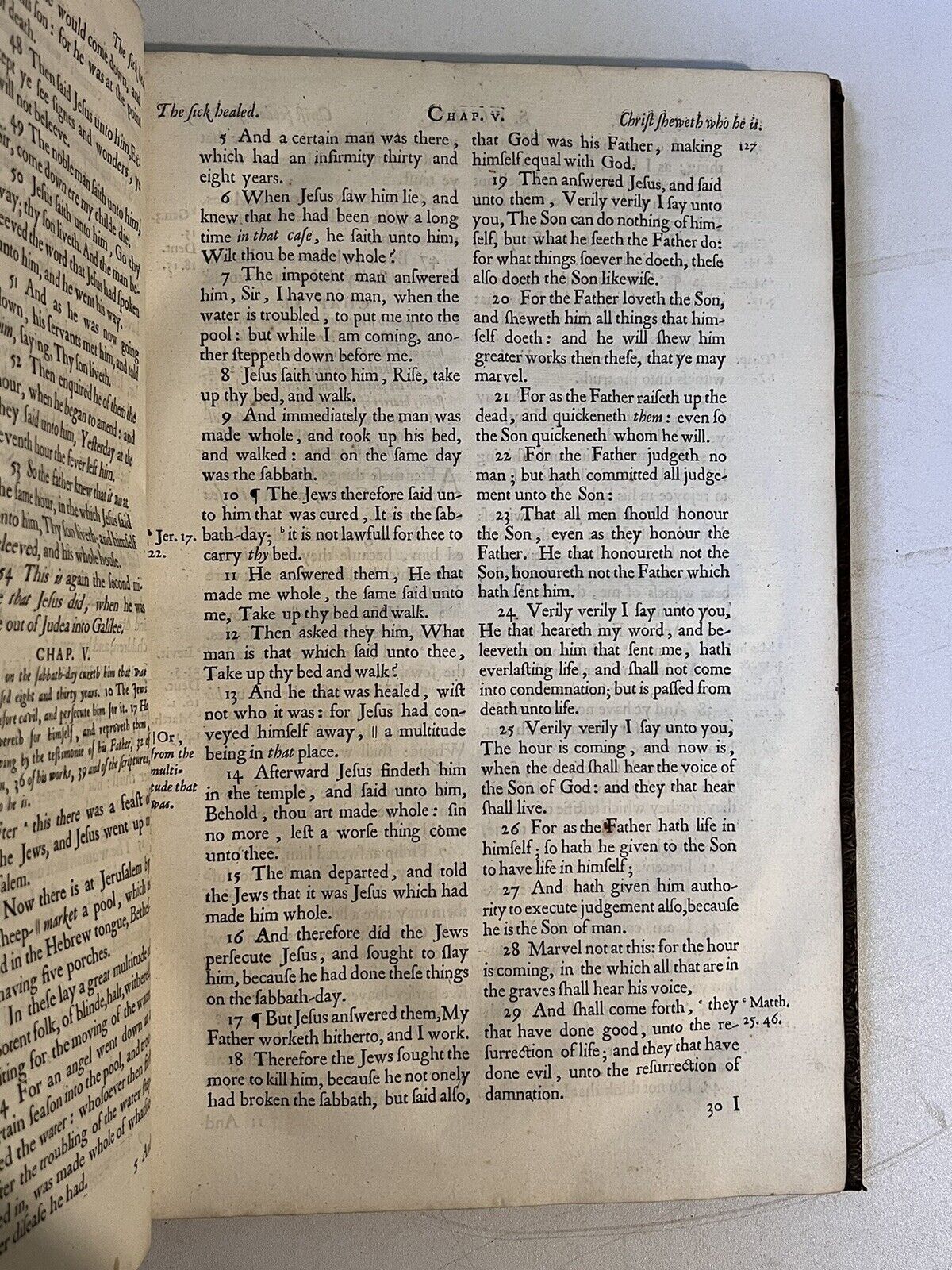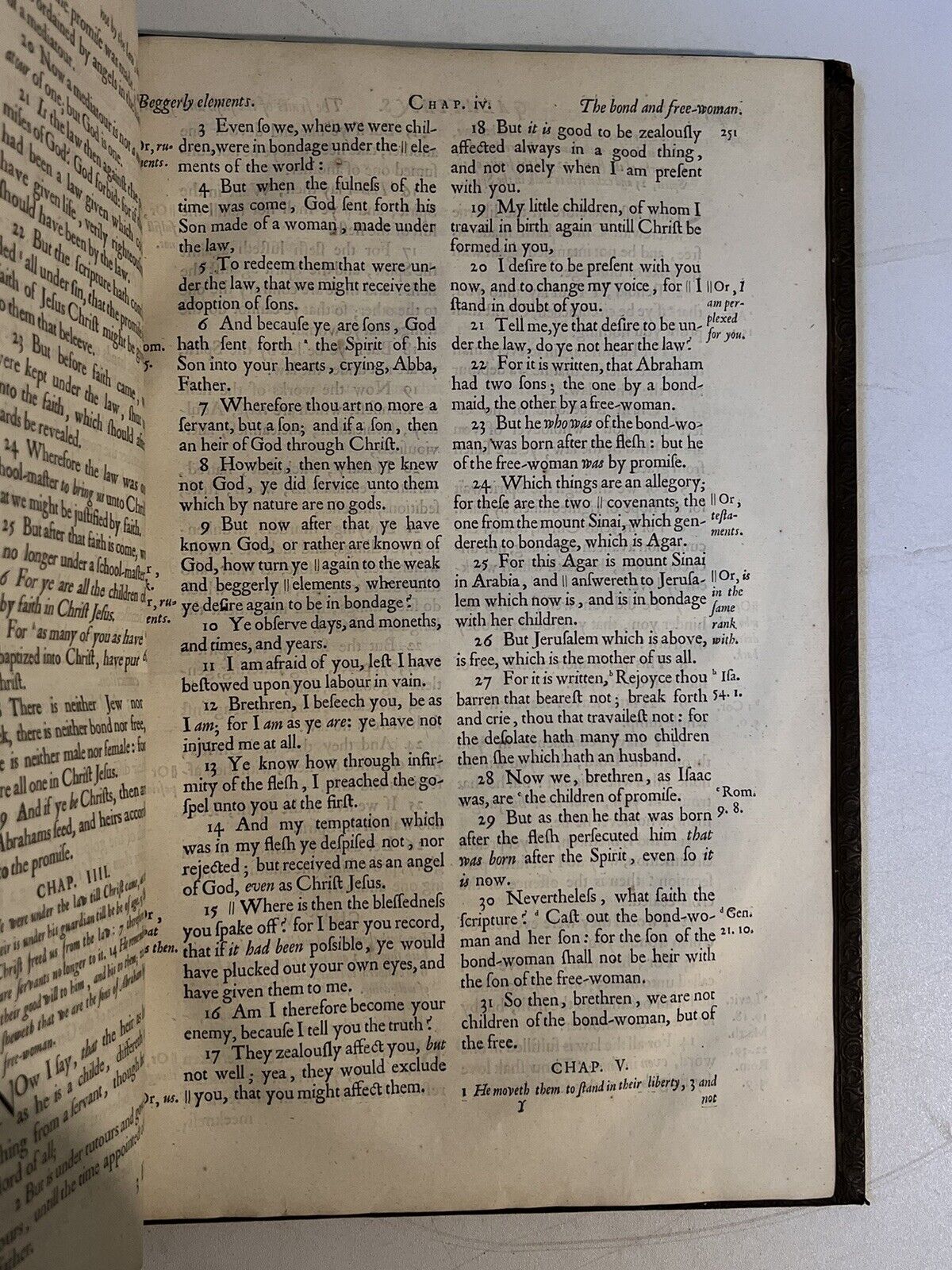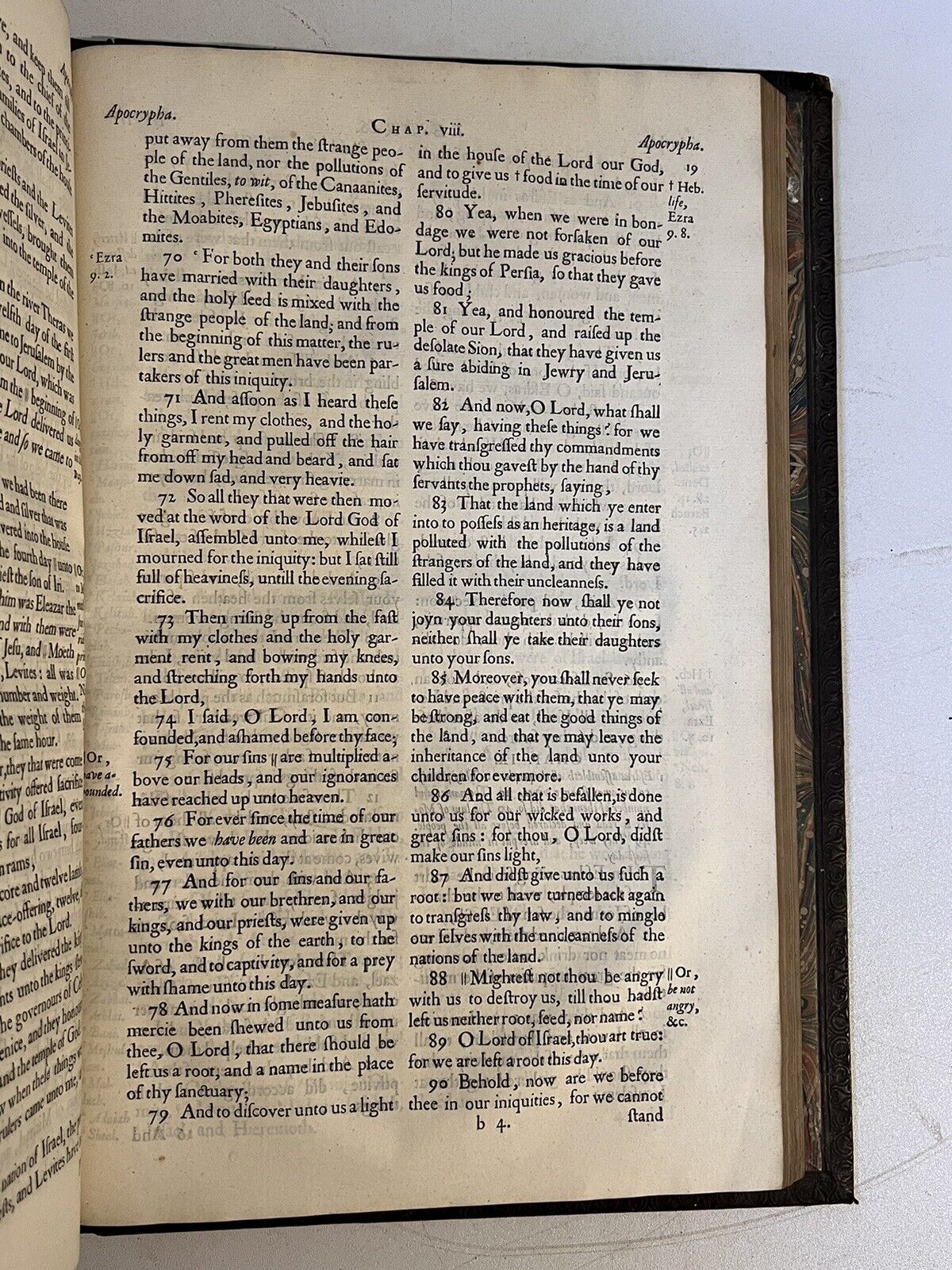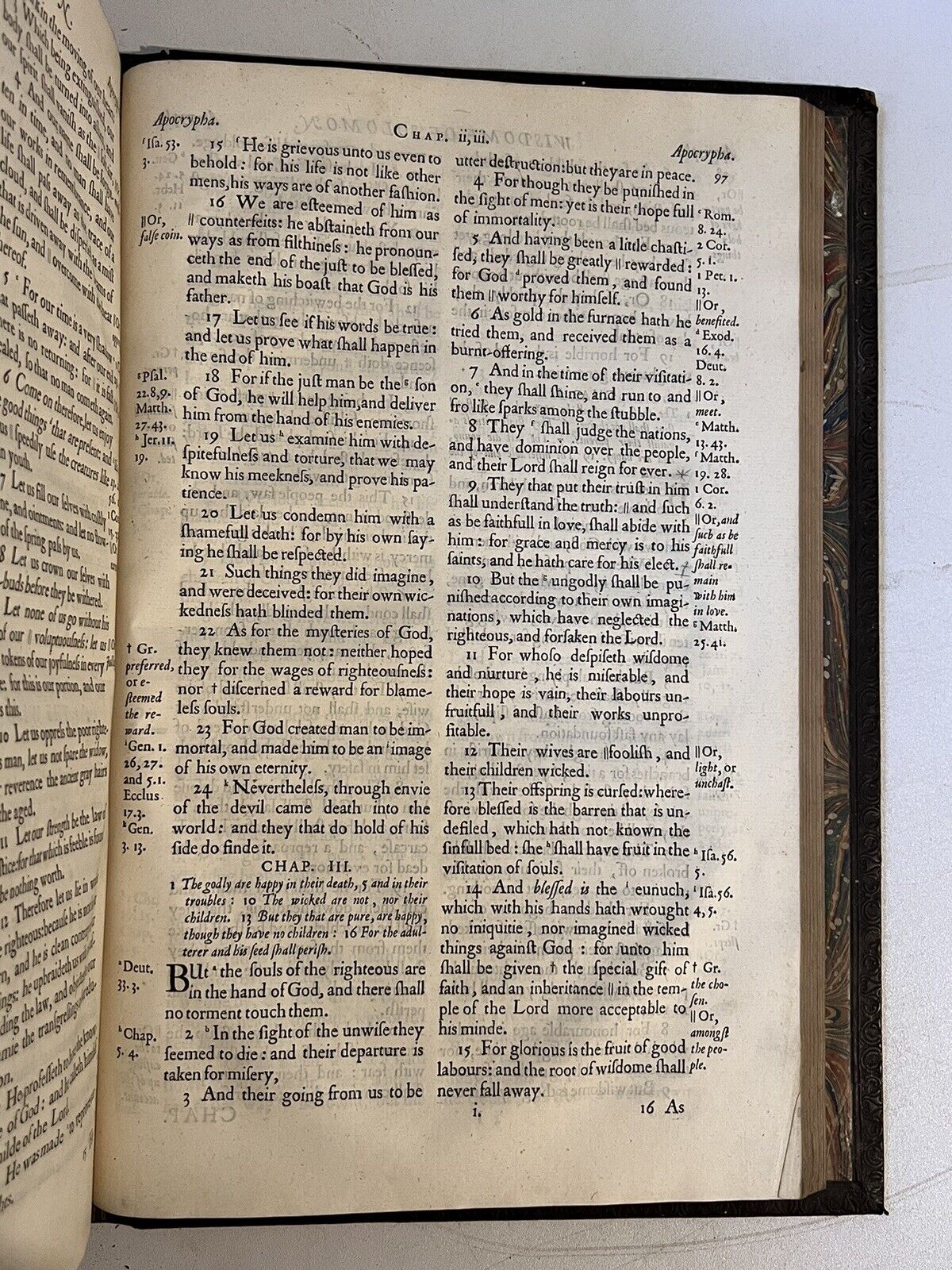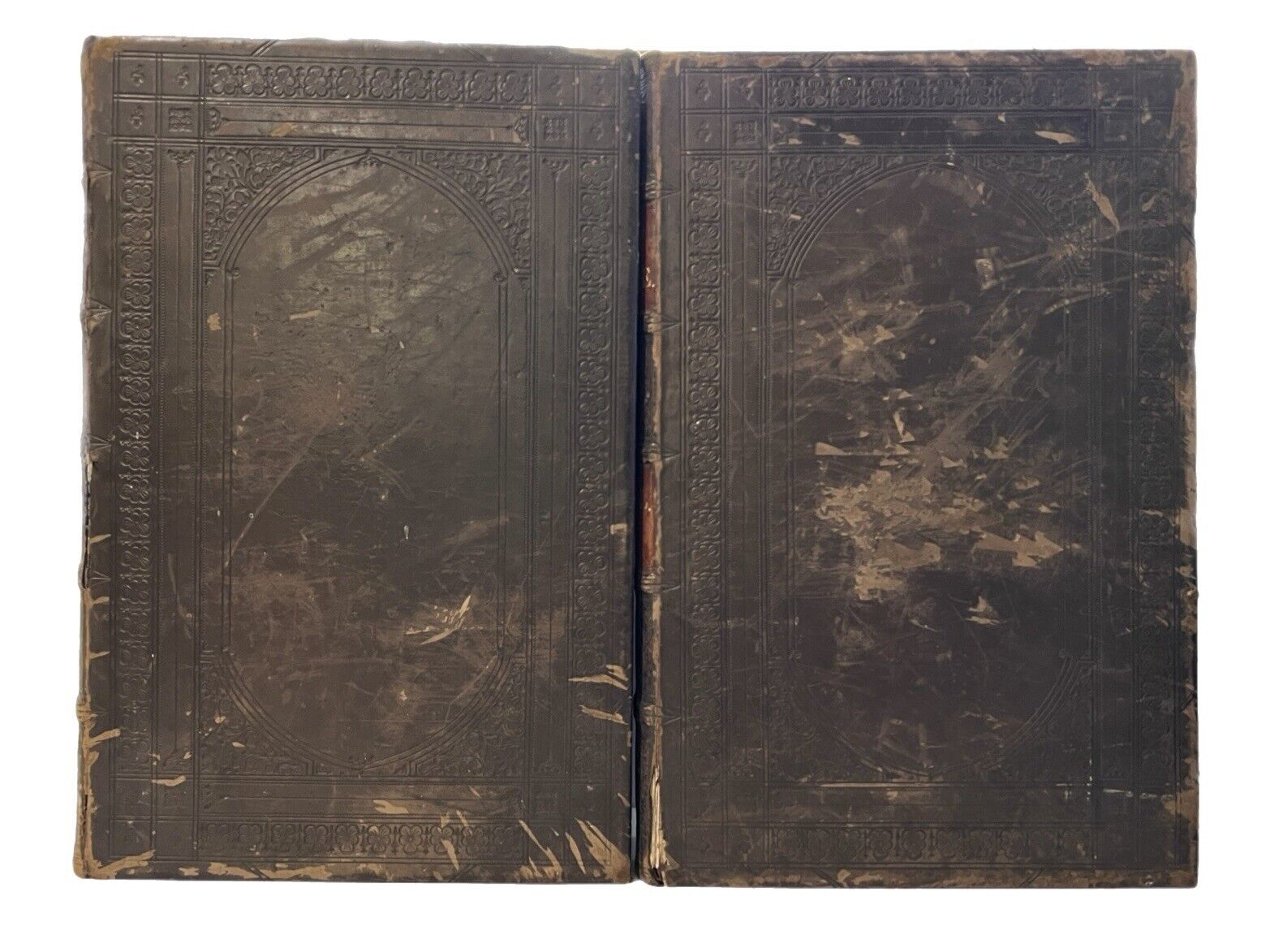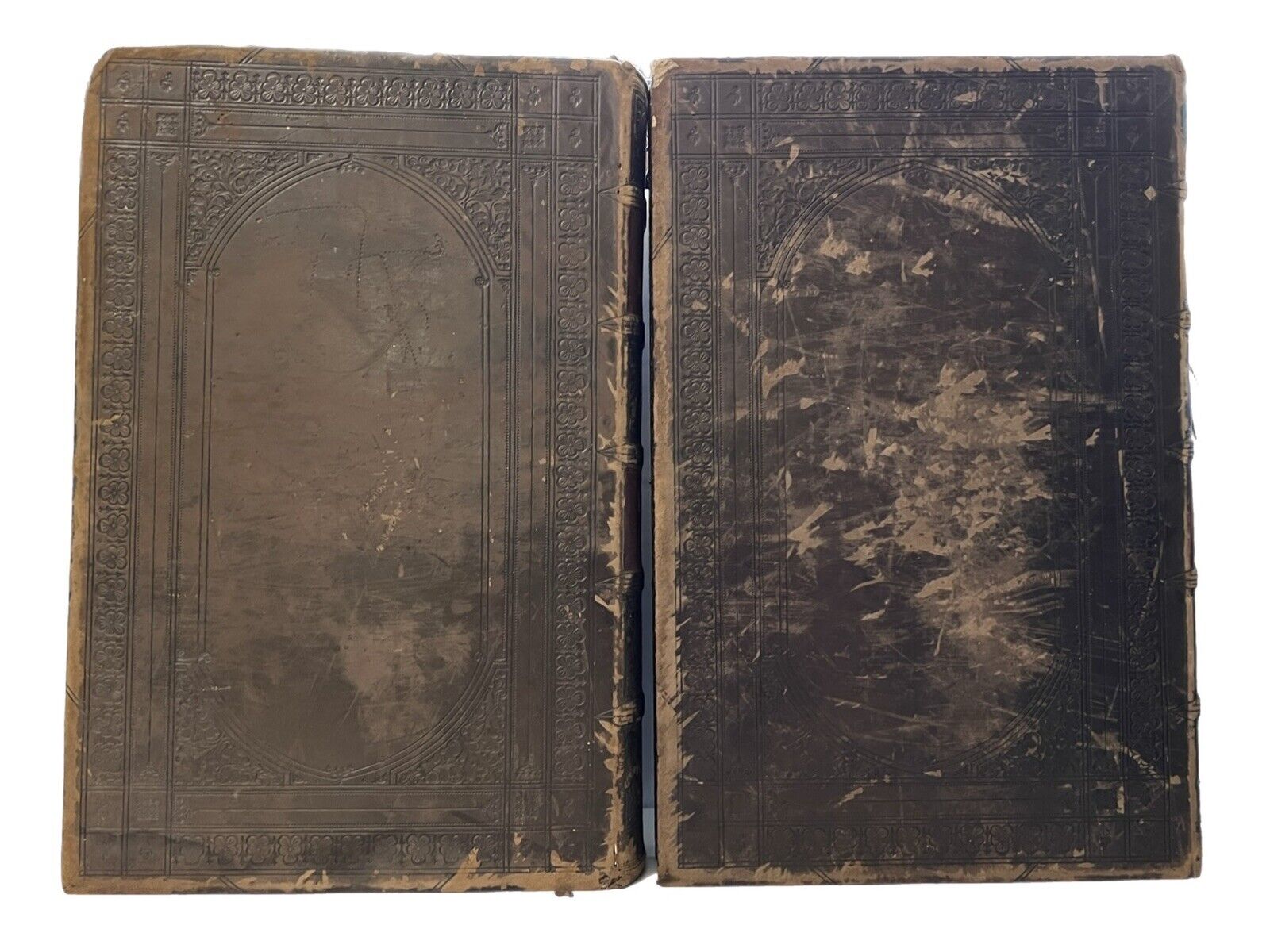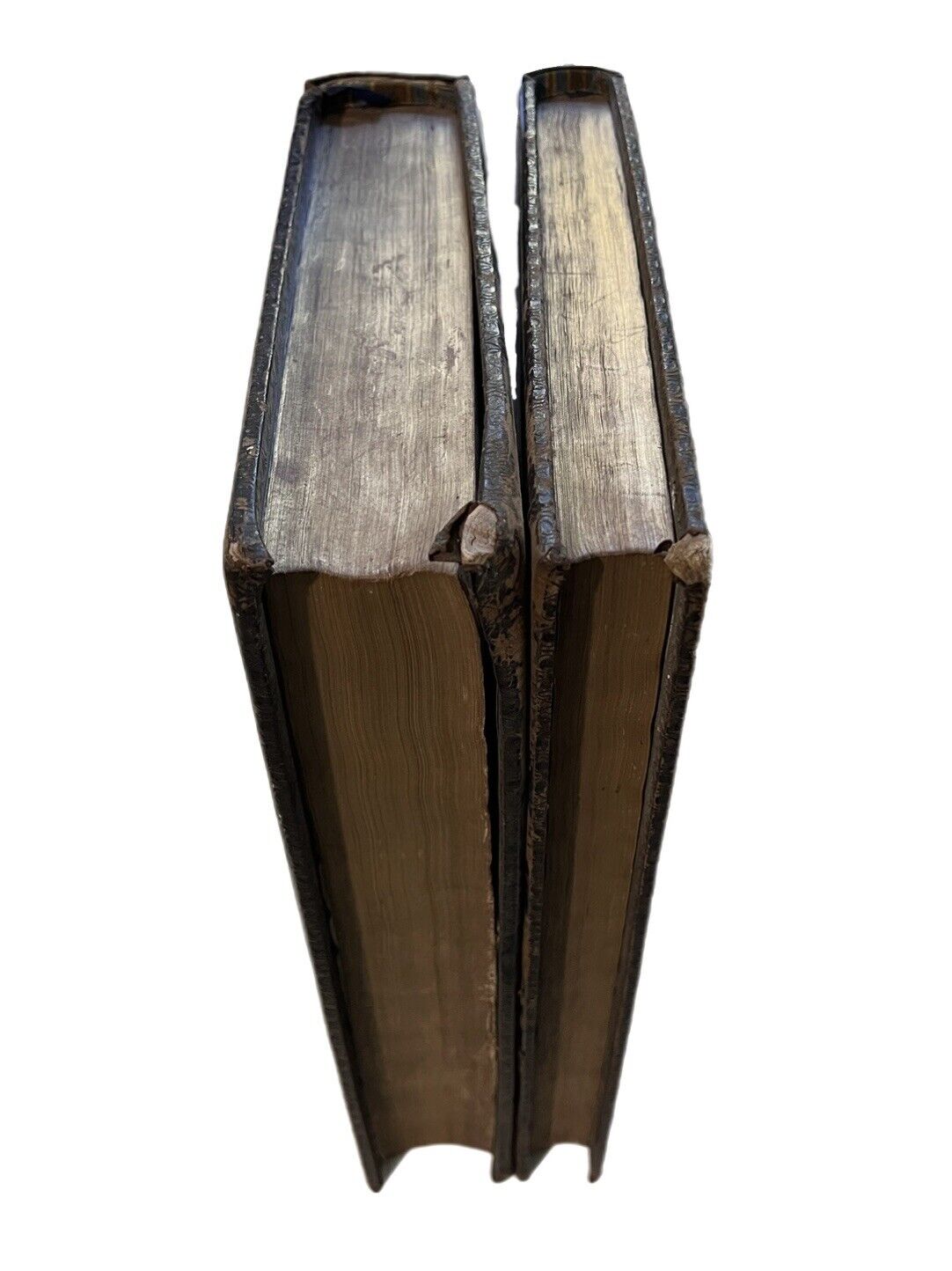The Ogilby Bible 1660; Important Fine King James Bible
The Ogilby Bible 1660; Important Fine King James Bible
Couldn't load pickup availability
An "unrivalled specimen of the press of the time", the finest edition of the Holy Bible then extant (Lowndes).
The Holy Bible. Containing the Bookes of the Old & New Testament. Cambridge: University Press, J. Ogilby, 1660. New Testament dated 1659, John Field, folios, a.e.g.
THE VERY IMPORTANT CAMBRIDGE FOLIO EDITION OF THE KING JAMES BIBLE; THE FINEST EARLY PRODUCTION OF THE KJV, HERE IN ABSOLUTELY INCREDIBLE CONDITION!
-------------------
This is one of the most desirable and valuable editions of the King James Bible, with an incredible production quality and important political motive too, with Solomon seated on the throne on the stunning engraved title page to reflect the 1660 restoration of the monarchy with Charles II. It is for this reason that auction sales records for this edition are almost exclusively above $10,000.
The text was first published the previous year by John Field, printer to the University of Cambridge, and hence the date of 1659 to the New Testament title page. John Field had been commissioned to supply a lectern bible for use in institutional settings (churches and libraries). The work was well-received, with the former university Vice-Chancellor John Worthington saying that '"For a fair large letter, large paper, with fair margin, etc, there was never such a Bible in being".
"Having presented a finely bound copy of this edition to the king on his first coming to the royal chapel at Whitehall, the publisher, Ogilby, was commanded to supply other copies for use in the chapel, closet, library, and council chamber, at a cost of £200. He presented another copy to the House of Commons, for which he received £50”.
This Bible would not have enjoyed widespread use because its size would very likely have confined its serviceability primarily to the church or chapel lectern, very few copies, if any, would have been originally privately owned. Samuel Pepys makes reference to this edition in his famous diary on 27 May 1667 that he was approached by a bookbinder with quires of Ogilby’s Bible, and although Pepys seems resigned to buying the set, he comments that “it is like to be so big that I shall not use it”.
Most examples have quite a lot of illustrated plates, however this copy has been bound without any of these plates. It is quite probable that this copy is one of the very earliest printings, perhaps a trial copy, especially as it is bound without the Book of Common Prayer and dedication to King Charles II which were known to be added slightly later.
-------------------
Size: 293 x 444 mm (approx., each)
Condition:
[(2), t.p., *1-**4, A1-4Y6, 4Z8, (2)]; [(2), t.p., A2-2E8, a1-y3, (2)]
19th century fine bindings, beautifully blindstamped boards, with spines retaining their tooled morocco labels, very attractive on the shelf. Bindings rubbed with joints starting and hinges cracked, but with all boards securely attached, the bindings are secure. The set is fully readable throughout and the bindings do not detract from the reading experience at all.
Collated as complete through all sections. The apocrypha is present and complete, though is bound after the New Testament in the second volume. The text block is beautifully clean throughout, truly a testament to the original paper stock used for the printing of this edition of how bright and clean the text remains, quite easily the most beautiful 17th century text block one will find for a Bible, especially of an edition which was almost always so extensively read and used at the Pulpit. The reason for the cleanliness of the text blocks here may well be because this was a trial copy for the printing; it was certainly one of the very earliest in the print run for this edition for the lack of the dedication to Charles II, rather being printed with the typical James I dedication. The final few leaves in first volume are a little ragged at edges but without any text loss etc. Naturally there are a few spots to a few leaves throughout, but generally this is the greatest condition of a 17th century text block we have ever encountered - it would definitely be the dream copy of the Victorian collector!
[Herbert 668; ESTC R17044; Wing B2258; Lowndes 1367; Griffiths 8; D&M 525].
